

Table of Contents 💡
Home - UX Portfolio - Tips on presenting your UX case study
Tips on presenting your UX case study
Imagine this. You’ve made it through the first job interview. You’re now asked for a second round interview to show your work. But how? And what do you need to keep in mind? Here’s how to present a UX case study during a job interview.
- Updated on May 9, 2024

This article will teach you how to present your UX case study during a job interview. If you follow along, you’ll increase your chances of getting invited to the next round. We’ll talk about the basics, such as attending the meeting on time, and more advanced tactics, like how you structure your presentation.
I’ve based the following tips on presenting my UX portfolio to multiple potential clients for years and the UX mentorships I’ve hosted for aspiring designers. In other words, these tips are based on real-world experience.
Table of Contents
How to present a ux case study.
The most important aspect of giving an excellent UX case study presentation is showing that you can solve a business challenge.
Even though your main goal is to be there for the user, you can’t forget that you’re hired by a business to help that business make money. If you only talk about users and forget to mention how you can help your potential employer grow a business, you’re likely to miss out.
Then there are also some basic job interview rules to consider. Let’s discuss those basics first.
Presentation basics
These basics are essential. People expect you to follow them. Because of that, doing so will not get you any bonus points. However, failing to follow the basics will leave a bad taste during your interview. Make sure you can check the following basics off of your list.
- Arrive on time.
- Stable internet connection (remote only).
- Position yourself in the middle of your frame (remote only).
- Make sure you’re able to focus without disturbance (remote only).
- Make sure your camera and mic are working correctly (remote only).
At some point during the interview, the interviewer will ask you to present your work. This means you can choose which of your case studies to pick. And that’s a good thing.
In my experience, there’s always a case study you prefer over your other case studies. Creating that particular UX case study has been easier, or the project has been more fun than your other projects.
So make sure you’re ready to pick one of your case studies on the spot if asked to. Pick the one you’re most comfortable with.
Start with a case study summary
Once you’re asked to present your UX portfolio, it makes sense to start explaining everything you’ve done. Try and stay away from doing that.
You’ll lose the attention of your crowd and put yourself in a position to receive challenging questions you can’t answer. Instead, give a summary first. Here’s what to include.
- The business challenge, what you were asked to do, and your role.
- What your main deliverable was.
- The results of your project and deliverable.
Here’s an example of what your UX case study summary might look like.
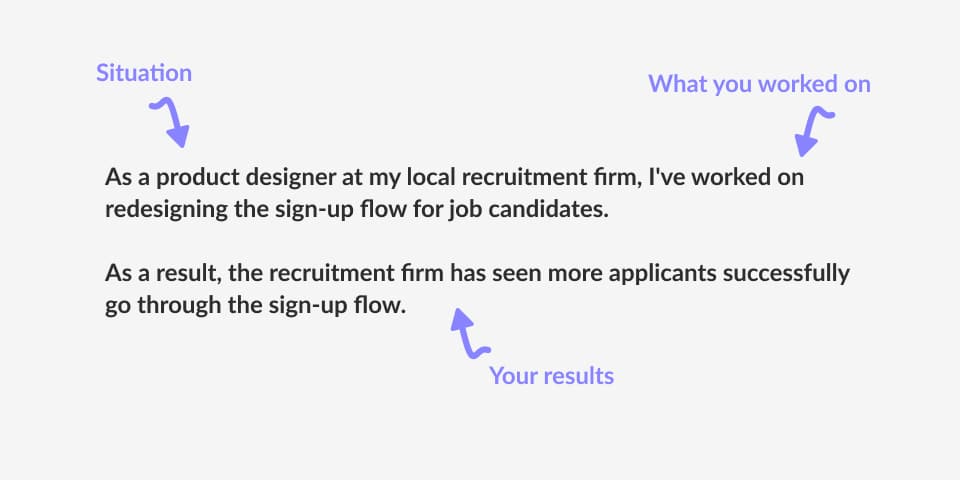
As a product designer at my local recruitment firm, I’ve worked on redesigning the sign-up flow for job candidates. As a result, the recruitment firm has seen more applicants successfully go through the sign-up flow.
This is a very short summary. And by doing so, you give those listening to your presentation the opportunity to ask questions. Because you keep a lot of information to yourself, chances are you get questions about that information. You can answer these questions with ease.
If you had presented every detail of your case study, you’re more likely to get questions you can’t answer.
Answering case study questions
After presenting your UX case study summary, it is time to answer questions. As I said, you leave room for questions on purpose to have more control over the type of questions you get.
My main advice here is to be honest when you don’t have an answer to one of the questions. I’ve seen many designers desperately try to answer every question they get. However, the people listening to your presentation will notice this.
Instead, be honest when you’re not sure. Let your audience know you’re willing to learn or return the question by asking what they think or what the company expects you to do.
That way, you show you know what you can improve and that you’re willing to have a good talk about it. That’s way more valuable than being someone that pretends to know everything.
Frequently asked questions
With the above structure, presenting your UX case study during a job interview should go much better. However, there are still some questions to be answered. I’ve collected several in the list below.
How long should a UX case study presentation be?
The length of your case study presentation depends on the structure of the interview. In almost all cases, that’s up to the hiring company. It is common for an interview to take between 30 and 60 minutes.
However, your UX case study presentation can be shorter than that. Those 30 or 60 minutes include the introduction, asking questions, and discussing the next steps as well. That leaves between 5 to 15 minutes for the actual case study presentation.
How many slides are in a UX case study presentation?
The number of slides in your UX case study can vary between 5 and 15. Less than that would mean that you don’t include the basics like the cover page, challenge, things you’ve done during the project, and your results.
However, when you go over 15 slides, you risk losing your audience’s attention. Be strict in the number of slides you include!
What should a UX presentation include?
Your presentation should include at least the main building blocks of your project. These include the business problem you’re solving, what the client has asked you to do, what you actually did, and the impact of your work.
Try making it very visual with mockups, photos of you working on the project, and a user testimonial from your tests. Before and after images also help you tell a better story.
UX Case Study (Course + Template)
I’ll walk you through the steps of creating a case study based on my 10 years of experience in UX.
- Video course and template.
- Includes real-world examples.
- Get personal feedback.
Case studies are what make up most of your UX portfolio. Therefore, being able to present them is a crucial skill you need to have when you want to get hired in UX .
These crucial steps will increase your chances of making it to the next round.
- Get the basics right. Make sure you’re on time, in a place where you can focus, and with a stable internet connection.
- Start with a summary of your case study to leave room for questions you can answer.
- Accept the fact that you can’t answer everything. It is better to acknowledge that than to try and desperately answer every question you get.
Do you have feedback on this article? Missing something? Or just a question? Reach out to me and I’ll get back to you!

About the author
Hi! I'm Nick Groeneveld , a senior designer from the Netherlands with experience in UX, visual design, and research. I'm a UX coach that supports other designers and have completed design projects in finance, tech, and the public sector.
Through The Designer's Toolbox, I'm an Educational Partner for Interaction Design Foundation.
☎️ Book a 1:1 mentor meeting with me or let's connect on LinkedIn , Twitter and Medium .
Get 3 months of free membership on IxDF when you join.
Complete a Figma course and get a certificate
Join our community & learn more about this topic.
Participate in weekly Q&A’s, live portfolio reviews, and more when you join our community of designers. Join here! 👇
$36 billed annually
Join our Slack community
Weekly UX Q&A’s
UX Career Track
$72 billed annually
Everything in Community, plus...
Join two UX master classes per month
Access to all UX master class recordings
Private Slack channel for async career support
20% discount on 1:1 UX coaching
Lifetime access
One-time payment
Access to our community and everything it includes.
Not a subscription. Pay once, join forever.
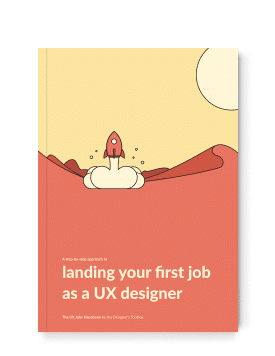
Our best seller 💪
Step-by-step guide to getting hired in UX

Our resources 💡
Community, books, guides, mentorship, and more

Join 1,400+ designers building a career in UX
Every week, you’ll get one actionable tip from the UX Career Track to help you get hired and build a career in UX.
We respect your privacy. Unsubscribe at any time.
The Designer's Toolbox
The Designer’s Toolbox helps you get hired in UX and UI Design. We’re your collection of design community, tips, tricks, and best practices.
About The Designer’s Toolbox
UX Equipment
UX Design Tools
Build your UX portfolio
Get a job in UX
For brands and companies
Work with us
The UX Jobs Handbook
UX Job Board
All resources
© 2024 All rights Reserved by the Designer's Toolbox
Privacy policy
Product Design Bundle and save
User Research New
Content Design
UX Design Fundamentals
Software and Coding Fundamentals for UX
- UX training for teams
- Hire our alumni
- Student Stories
- State of UX Hiring Report 2024
- Our mission
- Advisory Council
Education for every phase of your UX career
Professional Diploma
Learn the full user experience (UX) process from research to interaction design to prototyping.
Combine the UX Diploma with the UI Certificate to pursue a career as a product designer.
Professional Certificates
Learn how to plan, execute, analyse and communicate user research effectively.
Master content design and UX writing principles, from tone and style to writing for interfaces.
Understand the fundamentals of UI elements and design systems, as well as the role of UI in UX.
Short Courses
Gain a solid foundation in the philosophy, principles and methods of user experience design.
Learn the essentials of software development so you can work more effectively with developers.
Give your team the skills, knowledge and mindset to create great digital products.
Join our hiring programme and access our list of certified professionals.
Learn about our mission to set the global standard in UX education.
Meet our leadership team with UX and education expertise.
Members of the council connect us to the wider UX industry.
Our team are available to answer any of your questions.
Fresh insights from experts, alumni and the wider design community.
Success stories from our course alumni building thriving careers.
Discover a wealth of UX expertise on our YouTube channel.
Latest industry insights. A practical guide to landing a job in UX.
Your ultimate UX portfolio presentation guide: How to present your UX design portfolio in a job interview
If you’re applying for UX design jobs, you can expect to give a UX portfolio presentation as part of the interview process. This is your chance to talk through some of your favourite portfolio projects—and to show the hiring panel what you’re capable of. It’s a nerve-wracking task, but it’s a crucial step towards landing a UX job.

Free course: Introduction to UX Design
What is UX? Why has it become so important? Could it be a career for you? Learn the answers, and more, with a free 7-lesson video course.
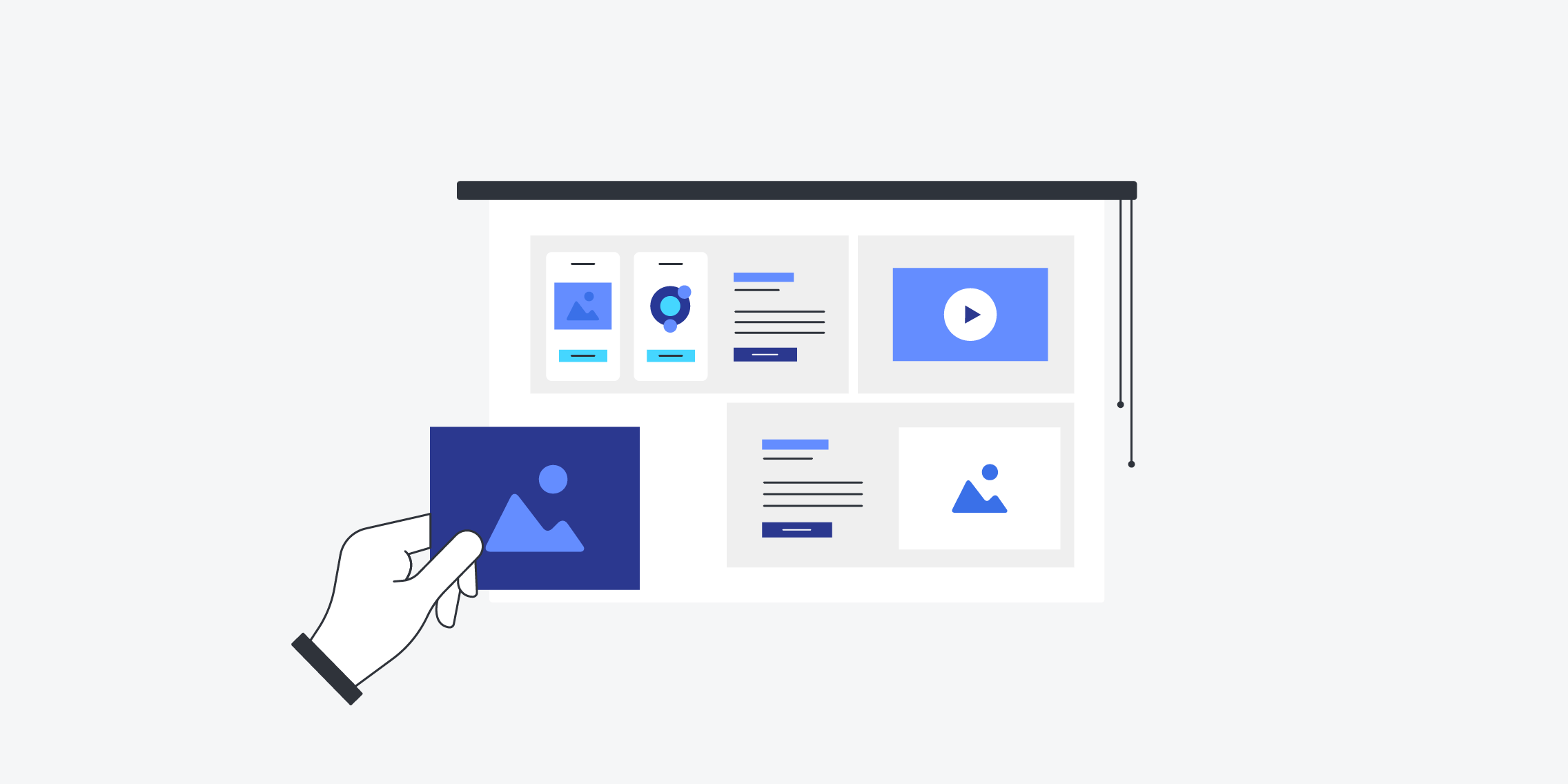
If you’re applying for UX design jobs, you can expect to give a UX portfolio presentation as part of the interview process.
This is your chance to talk through some of your favourite portfolio projects—and to show the hiring panel what you’re capable of. It’s a nerve-wracking task, but it’s a crucial step towards landing a UX job.
New to UX interviews and portfolio presentations? Then keep reading.
This is your ultimate UX portfolio presentation guide . We’ll show you not only how to structure your UX portfolio presentation, but how to deliver it successfully on the day.
Here’s what you’ll learn:
What is a UX portfolio presentation?
What should a ux portfolio presentation include, how long should your ux portfolio presentation be.
- How to structure your UX portfolio presentation: A framework
- How to prepare for (and ace) your UX portfolio presentation: 5 steps
Ready to become a UX portfolio presentation pro? Let’s begin.
[GET CERTIFIED IN UX]
A UX portfolio presentation is a key step in the UX hiring process . Whenever you apply for a UX or product design role, you’ll likely be required to present your portfolio to a panel—either in person or via Zoom. Typically, the UX portfolio presentation takes place once you’ve passed the initial phone screen(s) and have moved to the interview stage.
What’s the purpose of a UX portfolio presentation?
Your UX portfolio presentation is your opportunity to show the hiring manager, and the wider team, what you’re capable of. You’ll talk them through 1 or 2 portfolio projects, giving insight into your UX design process and your approach to problem-solving.
It’s also a chance for the hiring manager to assess your communication and presentation skills. Most UX roles will require you to present to stakeholders, so employers want to make sure that you can effectively communicate your work.
Your UX portfolio presentation should include the following:
- A brief yet powerful introduction: Tell the hiring panel who you are and what you’re all about before you jump into the presentation itself.
- 1 or 2 case studies: These are the crux of your UX portfolio presentation, demonstrating your skills, process, and problem-solving approach in action.
- Outcomes and learnings: For each case study you present, you’ll show the panel not only what you achieved but also what you learned.
- Supporting visuals: Just like your portfolio itself, your UX portfolio presentation should contain plenty of interesting visuals to illustrate the story of each project and ensure the presentation is engaging.
- Q&A: At the end of the presentation, be prepared to answer questions (usually about 10-15 minutes).
Hiring managers will usually allocate between 45 minutes and 1 hour for your UX portfolio presentation. The recruiter should be able to provide you with the timeframe. But, if not, plan to present for around 40 minutes and leave enough time for questions at the end. As with any kind of presentation, practise a few times beforehand to make sure you’ve got plenty of time to cover everything at a comfortable speed.
[GET CERTIFIED IN UI DESIGN]
How to structure your UX portfolio presentation
There is no universally approved template for a UX portfolio presentation. However, there are certain key components that all portfolio presentations should include, as well as a broad structure that will help you tell a logical story.
Here’s an outline you can use to structure your UX portfolio presentation. And remember: it’s just a template—adapt it to make it work for you.
- Opening slide
- Introduction (a bit about you)
- UX portfolio case studies
- Closing slide
With that framework in mind, here’s how to structure your UX portfolio presentation .
1. Opening slide
Every good presentation begins with an opening slide. It doesn’t need to be fancy—it’s just nice to have it up on the screen while the audience settles in and you make any final preparations.
This slide can be as simple as your name, your professional title, and the presentation title, or you can jazz it up with some fun visuals.
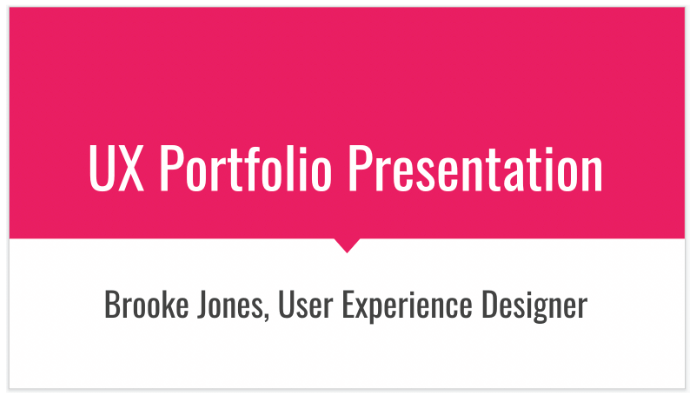
2. Introduction (a bit about you)
First things first: introduce yourself.
There may be people on the panel who haven’t met you yet, so take a moment to share who you are, what you do, and why you’re passionate about UX design (or your niche area if you’re going for a specialist role such as UX researcher or UX writer ). If you have time, you might also share a fun fact about yourself. This can be a good icebreaker!
This is just a quick overview of what you’ll cover throughout your UX portfolio presentation. It gives the audience an idea of what’s to come, and in what order. As you introduce the projects you’ll present, it’s also worth explaining why you’ve chosen to highlight these particular projects. Take this moment to convey your passion for what you do.
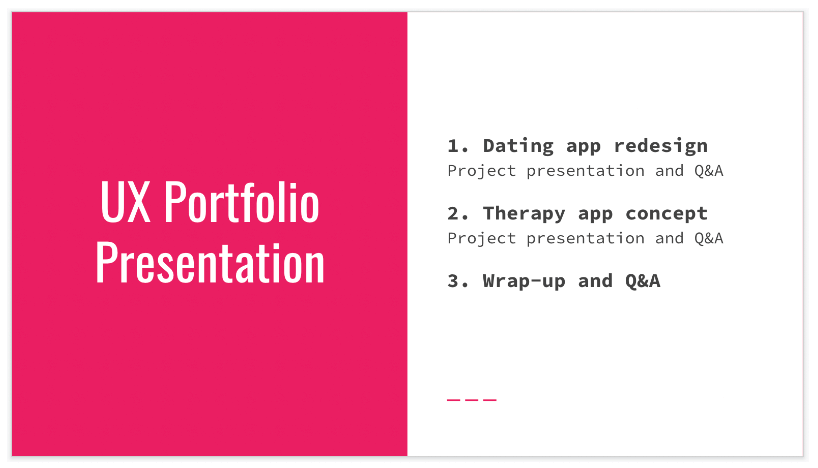
4. UX case studies
Your case studies will span several slides. Begin with a title slide introducing the name of the project and, if you haven’t done so already, explain why you’ve chosen to include this project in your UX portfolio presentation.
Is it based on a topic you’re passionate about? Did it present a particularly valuable learning curve? Was it one of your most successful projects? Explain why you’re excited to share this project—and get the hiring panel excited, too.
Next, you’ll want to cover the following points for each case study. Each point can span 1 or 2 slides as necessary, and you can combine several points into one. All that matters is that you tell a clear, cohesive story which the hiring panel can follow.
- Project overview: What is the project about? Set the scene and provide important context. Here you can talk about when/in what context you completed the project—for example, as part of your UX design course or bootcamp or at a previous job.
- Your role: Who were you collaborating with and what was your contribution? Explain who was involved in the project and where you fit into the team. What were your main responsibilities and areas of expertise? Who did you collaborate with along the way? This is a great opportunity to demonstrate teamwork while clearly defining your individual role.
- The challenge: What problem were you trying to solve and who were you solving it for? Clearly state the challenge and provide some background. For example, what led to the problem and/or to the discovery of the problem? What pain-points were you seeking to address—and, most importantly, who for? At this point, you can also allude to the final solution. This might not seem logical, but it will actually help the audience to follow and understand your process.
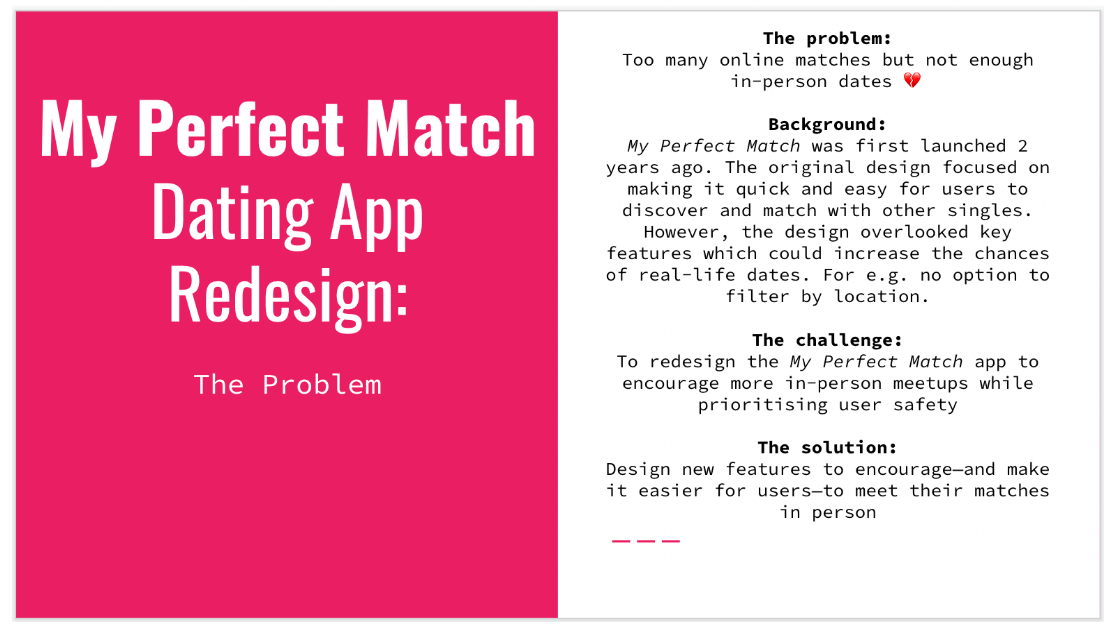
- Your approach: How did you go about solving the problem? Provide a high-level overview of the process you followed to address the design challenge. For example, your approach might have looked something like: User research, ideation, prototyping, testing and iterating, development.
- A closer look at your process and specific methods: Zoom in on specific aspects of the process—outlining the methods you used, why you used them, what value or purpose they served, and how they shaped your design decisions. For example, if one aspect of your approach was user research , explain which research methods you used and why, as well as what insights they helped you to uncover.
- The solution: Where did your chosen process and methods lead to? How did you arrive at the final solution? Refer back to the original problem and explain how you reached your final solution. It’s worth sharing the different solutions you considered before making a decision—outlining the pros and cons of each and explaining why the chosen solution made the most sense.
- The end results: What did or does your solution look like? You’ve explained how you came up with a solution to the problem. Now share how that solution looks (or looked) in action. Did you design new features for an app or come up with user personas ? What was the impact of the solution? Are there any measurable results you can share, either for the business or the end user?
- Learnings and reflections: What did you learn from the project? What challenges did you face and how did you overcome them? What would you do differently next time? Even if you’re highlighting this as your most successful project, it’s unlikely that everything went completely smoothly. Impress the hiring panel with your ability to reflect and learn by sharing what you’d do differently next time, or how you course-corrected along the way.
- Questions: You’ll usually have a longer Q&A session at the end of your portfolio presentation, but it’s worth carving out some additional time at the end of each case study. This encourages the panel to engage and gives you the chance to elaborate on points of interest.
5. Q&A session
Once you’ve talked the panel through your UX projects, wrap up your portfolio presentation with a Q&A. Thank your audience for listening and say you’d be happy to answer any questions they have.
6. Closing slide
Just like your opening slide, this is a nice bookend to your presentation. A simple “Thank you for listening!” is perfect—but, as always, feel free to get creative with visuals if you want to inject some extra personality.
Compiling your presentation is just one part of the process. To close our guide, we’ll outline 5 key steps you can follow to prepare for—and ace—your UX portfolio presentation .
How to prepare for (and ace) your UX portfolio presentation
We’ve shown you how to structure your UX portfolio presentation. But what other preparation is involved?
Follow these steps to ensure your UX portfolio presentation is a success:
- Choose the projects you want to showcase
- Write an outline for each project case study
- Prepare your UX portfolio presentation slides
- Practice with a timer (and with an audience)
- Anticipate possible questions from the hiring panel
1. Choose the projects you want to showcase
The purpose of your UX portfolio presentation is to show the hiring team what you’re capable of. Before you start putting your presentation together, spend some time going through your UX portfolio and choosing which projects to showcase.
You might simply go for your favourite projects or the ones you’re most proud of—and that’s not a bad approach. You want to be able to talk passionately and enthusiastically about your work. However, make sure you’re also choosing projects that highlight the skills and qualities the employer is looking for.
For example: if you’re going for a UX research role, you’ll want to present a project where you were responsible for user research. If you’re interviewing with a healthcare company and you’ve worked on a healthcare app in the past, that would be a good case study to highlight.
In short: Choose the projects which best demonstrate your suitability for the job.
2. Write an outline for each project case study
You’ve chosen your projects; now you need to plan how you’ll present them. Before you start putting your presentation deck together, draft an outline of how you’ll talk about each project and the main points you’ll cover.
Hopefully, you’ve already been through the process of creating your UX portfolio and have several projects written up in the form of detailed case studies—which you can use as the basis for your presentation. You can refer back to our UX portfolio presentation framework (in the previous section) for an overview of the kind of detail to include, and here are the main points at a glance:
- Project overview
- The problem you were solving
- Your approach, process, and methods
- The solution and end results
At this stage, your project outlines don’t need to be word perfect. The main goal is to have a clear idea of what each project should demonstrate—and how you’ll get the most important points across.
In short: Pick out the most important points you want to cover for each portfolio project and draft an outline.
3. Prepare your UX portfolio presentation slides
With your portfolio projects chosen and your outlines drafted, you’re ready to compile your UX portfolio presentation. For this step, follow the presentation framework we outlined earlier on in this guide.
Here’s a recap of how to structure your UX portfolio presentation:
- Title slide
- Case studies
- Closing slide (thanks for listening!)
Now you might be wondering which format your presentation should take. Always read the recruiter’s instructions carefully to see if they’ve specified any exact requirements. If not, use your tool of choice to create a presentation deck (e.g. Google Slides) and be sure to download it in PDF format, too. You never know what the WiFi situation will be on the day, so make sure you can access your presentation offline if you need to.
When it comes to designing your presentation deck, follow all the usual design rules and principles —clear, legible text, plenty of contrast, and a good image-to-text ratio. Beyond that, you have all the creative freedom you could ask for.
In short: Use a tool like Google Slides to design and compile your UX portfolio presentation deck. Download it as a PDF, too, in case the Internet fails you on the day.
4. Practice with a timer (and with an audience)
One of the trickiest parts of a UX portfolio presentation is getting the timing right. You want to provide enough detail without going on for too long—and you want to present at a comfortable pace.
Once you’ve put your presentation deck together, practice going through it with a timer. Most UX portfolio presentations last between 45 minutes and an hour (the recruiter should let you know how long you’ve got), so make sure you can get through the whole thing without rushing.
Based on your practice runs, make cuts (or additions) to get your presentation to the ideal length.
Then, if you can, practise in front of an audience. This will help you to make sure you’re telling a cohesive and logical story about each project. If your practice audience can easily follow along and finds your presentation engaging, you’re onto a winner. If they have feedback, iterate and adapt til you get it right.
In short: Practise your presentation in front of an audience and with a timer. This will ensure you’ve got the length just right, and that you’re communicating clearly and effectively.
5. Anticipate possible questions from the hiring panel
Most UX portfolio presentations will end with questions from the hiring panel, so it’s a good idea to anticipate what these questions might be.
They might ask about specific aspects of your UX projects, or about your design process in general. Brainstorm some possible questions (you can ask your practice audience to come up with some, too) and think about how you’ll answer them.
While it’s impossible to anticipate exactly what will come up, having some answers prepared will help you to enter your UX portfolio presentation feeling confident and ready.
In short: Brainstorm possible questions the hiring panel might ask you and think about how to answer them.
Wrapping up
We’ve covered everything you need to know about structuring and delivering an effective UX portfolio presentation. Hopefully, with the help of this guide, you can tackle your UX job search with confidence. For more helpful career advice and resources, check out these guides:
- Are you just starting out in UX? Here’s how to reframe your previous work experience (and use it to your advantage)
- How to recognise UX maturity while job hunting (and why it matters)
- What kind of salary can you expect as a UX designer?
The following video has some great portfolio tips too:
- UX Portfolios
Subscribe to our newsletter
Get the best UX insights and career advice direct to your inbox each month.
Thanks for subscribing to our newsletter
You'll now get the best career advice, industry insights and UX community content, direct to your inbox every month.
Upcoming courses
Professional diploma in ux design.
Learn the full UX process, from research to design to prototyping.
Professional Certificate in UI Design
Master key concepts and techniques of UI design.
Certificate in Software and Coding Fundamentals for UX
Collaborate effectively with software developers.
Certificate in UX Design Fundamentals
Get a comprehensive introduction to UX design.
Professional Certificate in Content Design
Learn the skills you need to start a career in content design.
Professional Certificate in User Research
Master the research skills that make UX professionals so valuable.
Upcoming course
Build your UX career with a globally-recognised, industry-approved certification. Get the mindset, the skills and the confidence of UX designers.
You may also like
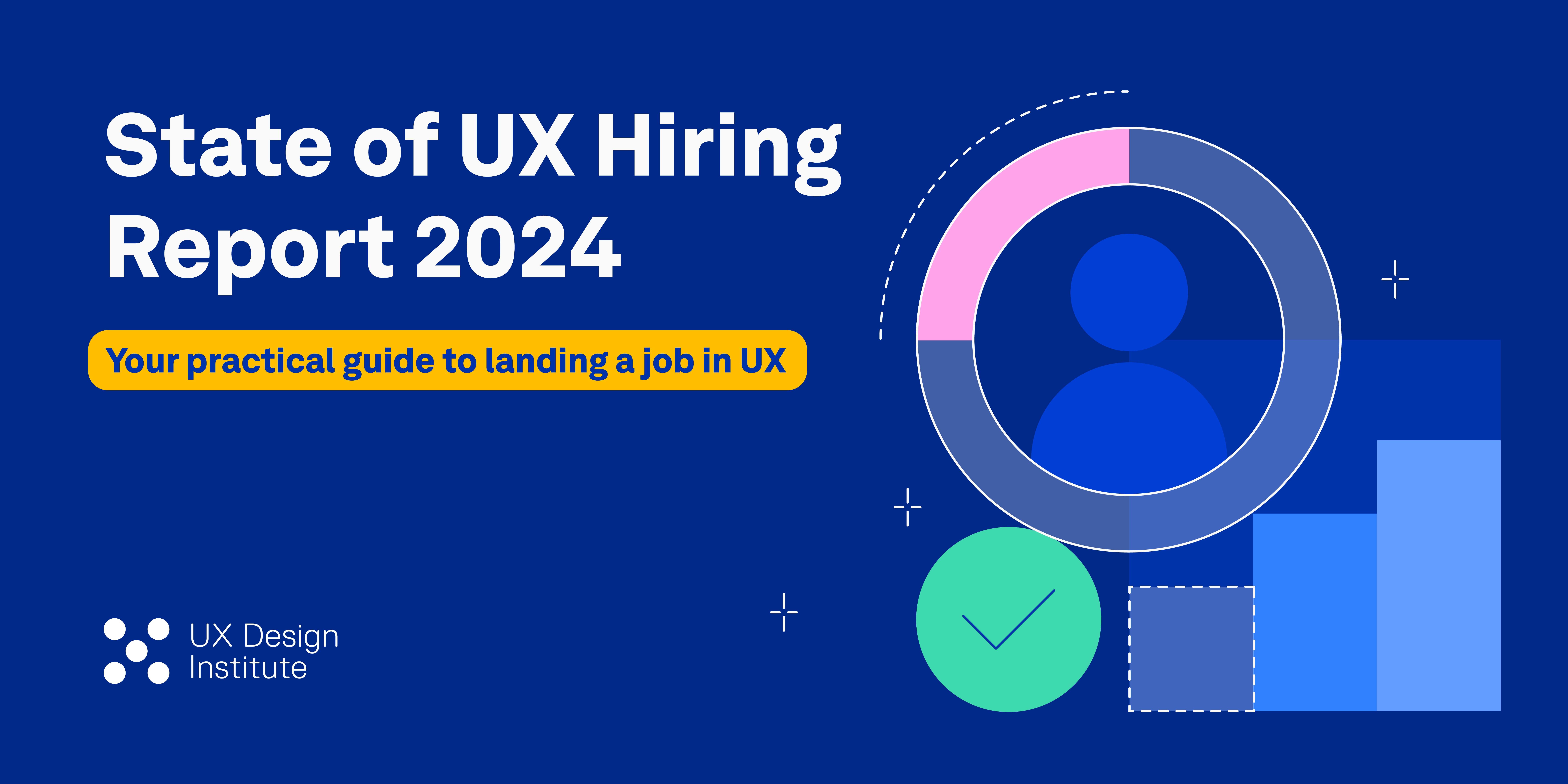
Your guide to landing a job in UX: Top insights from UX Design Institute’s State of UX Hiring Report 2024

UX designer salaries in the UK in 2024
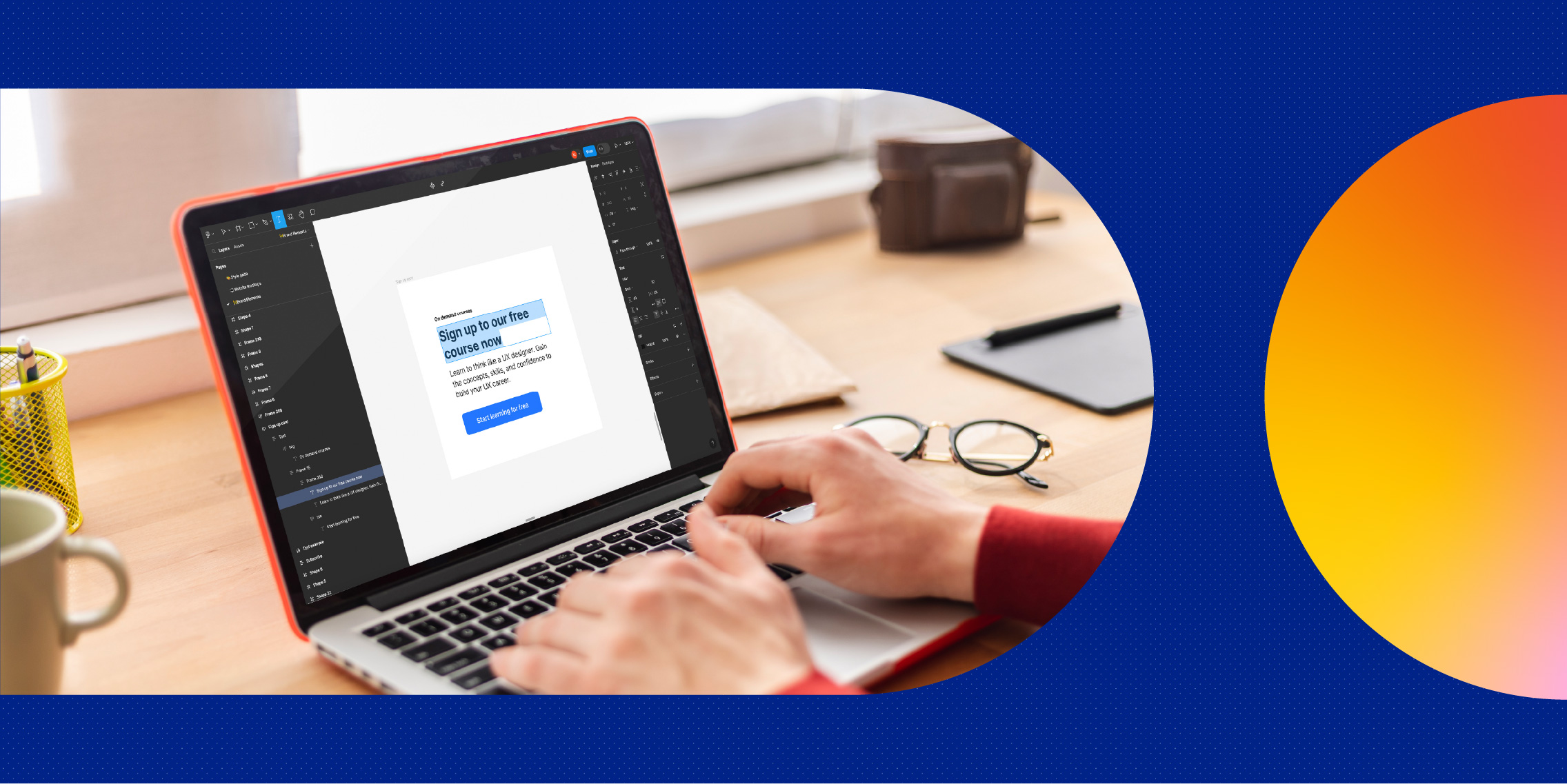
What does a UX writer (also known as a content designer) do? Everything you need to know
Build your UX career with a globally recognised, industry-approved qualification. Get the mindset, the confidence and the skills that make UX designers so valuable.
2 July 2024

How to Present a UX Portfolio During a Job Interview
Tips and strategies for your UX portfolio presentation to impress potential employers and increase your chances of landing your dream UX job.
Stay in the know with The Brief
Get weekly insightful articles, ideas, & news on UI/ UX and related spaces – in to your inbox
In the competitive field of user experience (UX) design, a standout portfolio can make all the difference when it comes to securing your dream job. Your UX portfolio is not only a showcase of your skills and accomplishments but also an opportunity to demonstrate your ability to solve complex design problems and create delightful user experiences.
However, simply having a remarkable portfolio is not enough; you need to know how to present it effectively during a job interview.
In this blog post, we will explore tips and strategies that will help you confidently navigate the process of presenting your UX portfolio, impressing potential employers, and increasing your chances of landing that coveted UX design position.
Whether you are a seasoned designer looking to level up your career or a fresh graduate stepping into the industry, these insights will empower you to make a lasting impression and stand out from the competition.
The Role of a UX Portfolio in the Job Application Process
- Why Do You Need to Present Your Portfolio?
- What Do UX Team Leads and Hiring Managers Look For?
What Format Should You Use To Present Your Portfolio?
How to structure your ux portfolio presentation during an interview, the importance of asking for feedback, key takeaways.
A UX design portfolio is a collection of your design projects that demonstrates your expertise and problem-solving abilities. Its purpose is to provide potential employers with a comprehensive understanding of your design approach, methodologies, and outcomes.
Your portfolio serves as a visual representation of your skills and experience . It allows employers to assess your ability to create intuitive user experiences, solve complex design problems, and deliver impactful results.

Why Do You Need To Present Your Portfolio?
When you initially apply for a job, you’ll usually be asked to submit your portfolio (in addition to your resume and cover letter).
The initial submission is part of the screening process —if you move on in the interview process, you’ll present your portfolio live, in front of one or more interviewers.
Delivering a UX portfolio presentation can feel like an academic test, where you’re judged on how “correct” each point your answer is.
But that’s so far from the truth.
Your portfolio presentation is an opportunity to craft a compelling story that narrates your design journey and highlights your passion for improving the lives of users through your product design work. It’s also a means of providing future employers a glimpse into the industries or projects that you’re drawn to.
For this reason, the projects you put into a portfolio should be thoughtfully chosen with your career goals in mind. If a recruiter, for example, were to come across a portfolio full of e-learning and health care projects, for example, they might not reach out to them to work at a company like Nike. (Unless the initiative was also something education or health-related.)
Each UX design interview is an exciting opportunity to share your work, your process, your ideas and hear from an audience who are looking for someone with your skills and passion.
Read more: UX Interview Tips: How to Prepare for a UX Design Interview

What Do UX Team Leads and Hiring Managers Look for?
Often, you’ll end up presenting your portfolio to a group of people . As you begin your prep, consider the specific needs and preferences of your target audience, whether it's a hiring manager, a design team, or a potential client. Tailoring your own portfolio presentations to their expectations increases the chances of leaving a lasting impression.
During a portfolio presentation, UX team leads and the hiring team and managers are particularly interested in seeing the following key aspects:

Share what your responsibilities were on a particular project, as well as who you worked with to make it happen. UX is a collaborative field, and team leads and hiring managers value candidates who can effectively communicate and work with cross-functional teams. Share examples of how you collaborated with stakeholders, developers, or other designers throughout your projects. Discuss how you gather and incorporate feedback and how you communicate design decisions to various stakeholders.
Design Process and Methodology
UX team leads and hiring managers want to understand your design process and methodology. Walk them through the steps you took, from research and ideation to prototyping and testing. Highlight how you conducted user research, gathered insights, and applied them to your design decisions. Emphasize your empathy for users and how you advocate for their needs throughout the design process—and what decisions you made to pair user needs with business goals.
Hot tip : this doesn’t mean having a diagram of the UX process. Hiring managers already understand what steps are taken in UX design. They want to understand how you implemented them in your work.
Visual and Interaction Design Skills
While the focus for a UX portfolio presentation might be on the overall user experience, a strong command of visual and interaction design is also essential—especially if UI and visual design skills are highlighted on the job description. Highlight your attention to detail, typography, color usage, and the consistency of your designs across different devices, final screens, or platforms.
Adaptability and Growth Mindset
UX is a rapidly evolving field, and employers value candidates who demonstrate a willingness to learn and adapt. Discuss any instances where you had to quickly learn new tools, methodologies, or technologies. Show that you actively seek opportunities to grow your skills and stay updated with industry trends.
It’s also ok to talk about challenges, or why something didn’t work. Use it as another opportunity to share how you pivoted and made changes to improve the user experience.
Impact and Results
UX team leads and hiring managers want to see measurable outcomes and the impact of your work. Include metrics or data that demonstrate the success of your designs, such as improved user engagement, increased conversions, or positive user feedback. Showcasing the value you have brought to previous projects helps build trust and credibility.
You can also highlight the Key Performance Metrics (KPI’s) you would use to monitor the ongoing health of your product. Be sure to highlight why those KPI’s are the most important to track.
Clear and Engaging Presentation Skills
Remember to practice your presentation multiple times to ensure a smooth delivery and to stay within the allocated time. Engage with the audience, maintain eye contact, and speak clearly and confidently.
Many design portfolios are built in website format, which is how you’ll share the portfolio during the initial application process.
However, when presenting a portfolio, you’ll want to use a slide deck. Google Slides and Canva are two popular presentation deck options, since they’re easily shared and viewed with a single link. However, you can also use Keynote or PowerPoint, if you prefer.
Some general points to keep in mind:
- Length: Most portfolio or case study presentations are 15-20 minutes. Keep this in mind as you craft and practice your presentation.
- Content: As you prep each slide, keep the emphasis on the visuals of the design process and key insights—keep the lengthy descriptions for your speaking notes.
- Visuals: The visual presentation of your portfolio and slide deck should use UX principles. Consistent headers, body font and size, grids, imagery, etc.
Structuring your portfolio presentation is crucial to ensure a clear and engaging delivery. Here's a sample suggested structure that you can follow when creating yours:
1. Introduction
Introduce yourself, sharing an overview of your background and areas of expertise. You’ll want to set the tone for your presentation by expressing enthusiasm and confidence. Some topics you might incorporate include your personal brand and unique value proposition as a UX/UI designer, your design philosophy and approach, and any relevant achievements, awards, or notable experiences.If you’re new to the field, you can absolutely pull on relevant highlights from past roles outside of UX/UI design, whether that’s leadership, project management, working with end users, etc.
2. Presentation Overview
Explain your rationale for selecting the specific projects included in your portfolio. Briefly introduce each project to provide context before diving into a detailed case study.
3. Case Study Format
Present each case study in-depth, one at a time. Each case study should follow the same format. Here’s a sample:
- Define the problem : Clearly articulate the problem or challenge you aimed to address.
- Design process and methodology : Walk through the steps you took, from research to implementation.
- Key insights and user research : Share important findings from user research and how they informed your design decisions.
- User testing and iteration : Discuss how you gathered feedback and iteratively improved your designs based on user insights.
- Results and impact : Highlight the positive outcomes, metrics, or feedback received as a result of your work. Clearly communicate the challenges faced, the solutions implemented, and the lessons learned.
4. Your Favorite Project
You will likely be asked to present your favorite project, rather than multiple case studies. In this case, the interviewers will be paying attention to your project selection—as well as why you chose it.
Some common sense here: be thoughtful about what you share. If you’re interviewing for a small company where you’re the first UX hire, but you emphasize how much you loved working on a project with multiple designers and a well-developed process…it might not work to your favor.
As is the case with UX design: keep your audience—and their needs—in mind.
5. Key Takeaways and Design Principles
One of the key components of your presentation will be your extrapolation: what the key takeaways from your case studies say about your work as a UX designer.
Take the time to highlight the design principles that guided your work throughout the projects and emphasize how these principles reflect your overall approach to UX/UI design in best projects. Interviewers pay attention to how well you are able to touch on and articulate UX design principles and how they correlate to user and business needs in your work.
6. Conclusion and Q&A
As you conclude your presentation, express gratitude for the opportunity to present your portfolio. Open the floor for questions and engage in a discussion with the audience, and be prepared to answer questions related to your design choices, thought process, and outcomes.
Asking for feedback after a portfolio review and presentation is essential for several reasons:
- Self-Reflection and Improvement : Feedback provides an opportunity for self-reflection and growth. It allows you to evaluate your performance, presentation style, and content delivery objectively. Constructive criticism can help you identify areas where you can enhance your presentation skills or clarify certain aspects of your portfolio. This feedback enables you to refine your future presentations and improve as a UX/UI designer.
- Gain Valuable Insights: Feedback from UX team leads or hiring managers can provide valuable insights into their perspective, expectations, and preferences. Understanding how they perceive your portfolio and presentation helps you align your approach and content with their specific needs. It gives you a clearer understanding of what aspects of your work resonated positively and what areas might need further development.
- Address Any Misunderstandings or Clarifications: Sometimes, due to the complexity or brevity of a presentation, certain aspects of your portfolio may be misunderstood or require further clarification. Feedback allows you to identify such gaps and address them effectively.
- Showcase Adaptability and Willingness to Learn: Actively seeking feedback demonstrates your openness to constructive criticism and your desire to continuously improve. UX team leads and hiring managers appreciate candidates who are receptive to feedback and show a growth mindset. It conveys your ability to take feedback onboard, learn from it, and adapt your approach accordingly.
- Build Relationships and Rapport: Requesting feedback fosters a sense of engagement and collaboration with the individuals who reviewed your portfolio. It opens up an opportunity for dialogue, allowing you to build rapport with UX professionals and potentially establish a mentorship or networking connection. Positive interactions resulting from feedback requests can leave a lasting impression and increase your chances of further professional opportunities.
When asking for feedback, be specific about the areas you would like feedback on, such as presentation style, clarity of communication, or specific projects. Be open-minded, receptive, and grateful for the feedback provided. Take note of any suggestions or recommendations and use them to refine your portfolio, presentation skills, and overall approach.
- A well-crafted UX portfolio is crucial for UX/UI designers to stand out in the competitive job market.
- A UX portfolio demonstrates expertise, problem-solving abilities, and design process to potential employers.
- Key aspects employers look for in a portfolio presentation include the candidate's role, design process and methodology, visual and interaction design skills, adaptability and growth mindset, and measurable impact and results.
- Presenting the portfolio in a slide deck format during interviews is recommended, emphasizing visuals and key insights.
- Asking for feedback after a portfolio presentation is important for self-reflection, gaining insights, addressing misunderstandings, showcasing adaptability, and building relationships with UX professionals.
Get weekly insightful articles, ideas,& news on UI/ UX and related spaces – in to your inbox
Launch a career in ux design with our top-rated program

Top Designers Use Data.
Gain confidence using product data to design better, justify design decisions, and win stakeholders. 6-week course for experienced UX designers.
%20(1)-min.png)
HOW TO BECOME A UX DESIGNER
Send me the ebook and sign me up for other offers and content on transitioning to a career in UX design.
Related posts

The Truth About Job Guarantees
.png)
What Salary Can You Expect as a UX Designer?

14 Common UX Portfolio Mistakes to Avoid for Career Success

How to Write a UX Case Study in 10 Steps

When you're starting out as a UX designer, you know that you need case studies for your portfolio. However, there's not a lot of concrete information out there on exactly what should be in a case study. People have different expectations for UX case studies, so in this article, we'll guide you through 10 steps to build a solid UX/UI case study.
If you really want to showcase your work effectively, approach your case study with the same diligence you would apply to a design project. Don’t just throw something together quickly because you need to fill your portfolio. You’ll miss a valuable opportunity to stand out. Think of creating a case study as a project in itself:
- Begin with research and inspiration : Look at other successful projects and case studies.
- Choose the content to highlight : Focus on the most impactful aspects of your work.
- Sketch layouts or structures : Plan how you’ll present your information visually.
- Develop a wireframe : Create a rough layout for your case study.
- Refine the design and visual presentation : Ensure your case study is visually appealing and consistent.
- Plan your release : Think about when and where you’ll publish your case study; consider a small social media campaign.
- Extend your reach : Write additional blog posts, articles, or use other project elements to generate interest.
🧠 Uxcel top tip: A compelling title is crucial for drawing readers in. Avoid generic titles like "Landing Page Case Study." Instead, be creative and engaging. For example, "From Clicks to Conversions: Enhancing Our Landing Page UX" is more likely to capture attention.
What is a Case Study?

A case study in UI/UX is a comprehensive narrative of a design project. It details the designer's approach to solving a user interface or user experience problem, including the project’s background, the problem addressed, the designer's role, and the steps taken. This format can significantly boost your chances of getting hired.
Purpose of a Case Study
The purpose of a case study is to:
- Communicate design thinking : Recruiters seek candidates who can explain their designs clearly and appealingly.
- Showcase skills and process : Highlight your abilities, thought processes, choices, and actions in context through engaging, image-supported stories.
- Engage recruiters quickly : Enhance your portfolio with 2–3 case studies featuring your best writing and captivating visuals to capture recruiters’ interest within 5 minutes.
10 Steps to Create a UX/UI Case Study
Step 1. introduction.
Your introduction sets the stage for your case study, providing readers with a clear understanding of the project's background and your involvement. Here’s how to craft a compelling introduction:
Explain the project
- Overview : Start with a brief description of the project. What is it about? Is it a mobile app, a website redesign, or a new feature?
- Your role: Clearly define your role in the project. Were you the lead designer, a team member, or focused on a specific area like user research or visual design? If you collaborated with teammates, be sure to acknowledge their contributions.
- The scenario : Provide some context for the project. Why was it initiated? What were the business goals or user needs that drove the project?
Set the context
- Project background : Give a brief background of the project. Mention any relevant details such as the industry, target audience, and the problem that needed solving.
- What you’ll cover : Outline what your case study will discuss. This gives readers a roadmap of what to expect.
Step 2. Define the objectives
Defining the objectives of your project is crucial for setting the direction and scope of your work. This step involves clearly outlining what you aim to achieve and how you plan to get there.
- Clearly state objectives : Articulate the specific goals you aimed to achieve with the project. This helps readers understand your focus and the criteria for success. For example, the main objective could be to improve user satisfaction scores related to the checkout process and decrease the overall time taken to complete a purchase by 30%.
- Define success metrics : Mention the key performance indicators (KPIs) or metrics you will use to measure the success of your project. This adds a quantitative aspect to your objectives. In the realm of the checkout scenario, the metrics could be checkout completion rate, user satisfaction scores from post-purchase surveys, and the average time to complete a transaction.
Step 3. Research goals and methods

Research is a critical component of any UX/UI project. It provides the foundation for understanding user needs, identifying pain points, and informing design decisions. This step involves setting clear research goals, using appropriate methods, and sharing valuable insights.
- Understand user needs : Define what you aim to learn about your users, including their behaviors, preferences, motivations, and pain points.
- Identify pain points : Specify the problems you need to uncover, focusing on areas where users struggle or express frustration.
- Gather feedback : Describe how you will collect feedback from users about existing or proposed designs.
- Explain research methods : Use methods such as one-on-one interviews, surveys, competitive analysis, and analytics review. Explain how these methods will help you achieve your goals.
- Detail your findings : Summarize the most important insights gained from your research, which should directly inform your design decisions.
🧠 Uxcel top tip: Share snippets of interviews or research deliverables to add visual interest to your process. However, don’t overdo it—no one wants to read four pages of interview transcripts.
Step 4. Define the problem
Defining the problem is crucial, as some designs may look great but solve non-existent issues or overlook more important ones.
- Clearly state the issue : Ensure readers understand the specific problem by describing it in precise terms. A well-defined problem should be specific and measurable, such as "users struggle to find their account settings" instead of a vague statement like "the app is confusing."
- Provide context : Offer detailed information about the problem uncovered during research. Specify the conditions under which the problem occurs, the affected user segments, and any relevant data.
Step 5. Define the audience

Defining your audience is essential for creating a product that meets user needs effectively.
- Identify target users : Clearly understand who will use or is already using the app or product. Determine the demographics, behaviors, and needs of your primary users.
- Create personas : Develop detailed personas to represent your target audience. These should include information such as age, occupation, goals, challenges, and preferences to help guide your design decisions.
Explore how to create personas in the Personas in UX Research lesson, which is part of the UX Research course.
Step 6. Brainstorming
Brainstorming is a crucial step where creativity and collaboration come into play. It’s about generating a wide range of ideas and narrowing them down to the most viable solutions.
- Use ideation techniques : Describe the ideation techniques you and/or your team used if any, such as brainwriting, SCAMPER, Crazy 8s, mind mapping, affinity diagrams, and sketching. Explain how these techniques helped in exploring different aspects of the problem and generating innovative solutions.
- Generate and share ideas : Present the initial ideas that emerged during brainstorming sessions. This can include rough sketches, mind maps, or notes from whiteboard sessions. Highlight the diversity of ideas and the collaborative effort.
Explore efficient ideation techniques in the Ideation Techniques & Challenges lesson, which is part of the Design Thinking course.
Step 7. Share your process

Sharing your process is vital for demonstrating how you approached the project and the reasoning behind your decisions. Include user flows, information architecture, and initial wireframes to show the evolution of your design. Along the way, briefly explain why you made certain design choices and how they address the problem or enhance the user experience.
🧠 Uxcel top tip : Don't expect people to read everything. Find the balance between showing your design work and articulating your decisions. If you need to describe some of the decisions you made or explain the process in more detail, try writing on Medium or your personal/company blog and then link it to your case study.
Step 8. Provide your solution

This step is where you showcase the final solution to the problem you’ve been addressing. It's your opportunity to present your design work and explain how it effectively resolves the identified issues.
- Present designs or interactive prototypes : Demonstrate how users interact with your design. You can even record videos to show key interactions and transitions.
- Color palette : Share your thoughts on how the selected color palette supports the overall design and brand identity. Provide color swatches and examples of how colors are applied in the interface.
- Typography : Describe the typography used in your design and its impact on readability and aesthetics. Include examples of headers, body text, and other typographic elements.
Include any additional design assets or elements that contribute to the final solution, such as icons, imagery, and illustrations.
Step 9. Testing and iteration
If you conducted testing and iterations after the launch, this is the step to discuss it. Sharing these insights shows how you refined your designs to create a better user experience.
- Share testing insights : briefly mention the reasons for testing, the methods used, and the findings.
- Detail improvements : Describe the specific changes made based on the testing feedback. Highlight how these iterations improved the user experience and addressed any identified issues.
Step 10. Conclusion and final thoughts
This final step should be concise but informative. Reflect on the process and share your final thoughts and any lessons learned throughout the project. If possible, include specific metrics or feedback to demonstrate the impact of your work.
Explore our design brief to test your skills by creating a UX/UI case study for a landing page that embraces diversity and inclusivity principles.
Tips for a Successful Case Study
- Permission : Get your employer’s or client’s permission before selecting a project for a case study, especially if you've signed a non-disclosure agreement (NDA).
- Consistency : Use cohesive color palettes from tools like Coolors or Adobe Color to ensure a clean and consistent presentation.
- Brand personality : If relevant, discuss the brand personality and design principles in your case study.
🧠 Uxcel top tip: Set an eye-catching cover image. If you don't have many followers yet, attracting attention can be challenging. We recommend giving special attention to the cover image of your case study—something that stands out and grabs people's attention as they scroll through their feed. Ask yourself: "What will make my project noticeable at first glance?"
Writing a UX case study is crucial for your career, especially when you're just starting out. A well-crafted case study not only showcases your skills but also demonstrates your ability to think critically and solve problems effectively. By including every necessary step—from initial research to final design—you can present a comprehensive and compelling narrative that highlights both your qualitative and quantitative research. This thorough approach will captivate your audience, impress potential employers, and significantly increase your chances of landing your dream job.
Frequently Asked Questions
Upskill your design team effectively.
Equip your design team with the best-in-class design training that sticks.
Do you know your design team skill level? Send them this quick test & see where their skills stand among 300K+ designers worldwide.
Level up your design career
Get step-by-step guide how to build or advance your UX design career.
Do you know your design skills level? Take a quick test & see where you stand among 300K+ designers worldwide.
Continue reading
Top 7 resources for ux/ui designers for meaningful design inspiration, the impact of ux design on application success: exploring costs and trends, 11 inspiring ux case studies that every designer should study, cookie settings 🍪.
- Interactive UX learning for all levels
- 20+ UX courses and career paths
- Personalized learning & practice
Design-first companies are training their design teams. Are you?
- Measure & identify team skill gaps
- Tailor learning for your team’s needs
- Unlock extensive learning library
- Visualize team growth over time
- Retain your designers
- Portfolio Tips
- Career Tips
- Portfolio Examples
- Get UXfolio!
UX Portfolio Presentation: How to Structure and Present Your UX Portfolio on a Job Interview
Anett Illés

During the job application process, you will have to present your work twice. First , remotely, when you submit your portfolio. Second , in person, when you get invited for an interview. Both are important and also correlated: Your portfolio will get you to the interview, where your UX portfolio presentation will land you the job.
Since your portfolio is involved in all stages, you can save lots of time and energy if you prepare it right at the beginning of your job or internship-seeking efforts . If you have a great portfolio, you can send it out with applications and use it to present during interviews .
A UX portfolio presentation is about showing your future employer and team that you can articulate your ideas, process, and concepts in a clear and concise style. You will give similar presentations to stakeholders when you get hired, so this is a crucial part of the hiring process.
The thought of presenting in a high-pressure situation could be scary. But remember that you have been preparing for this since you started working on your UX portfolio. With a little practice, you will nail the presentation and land the job!
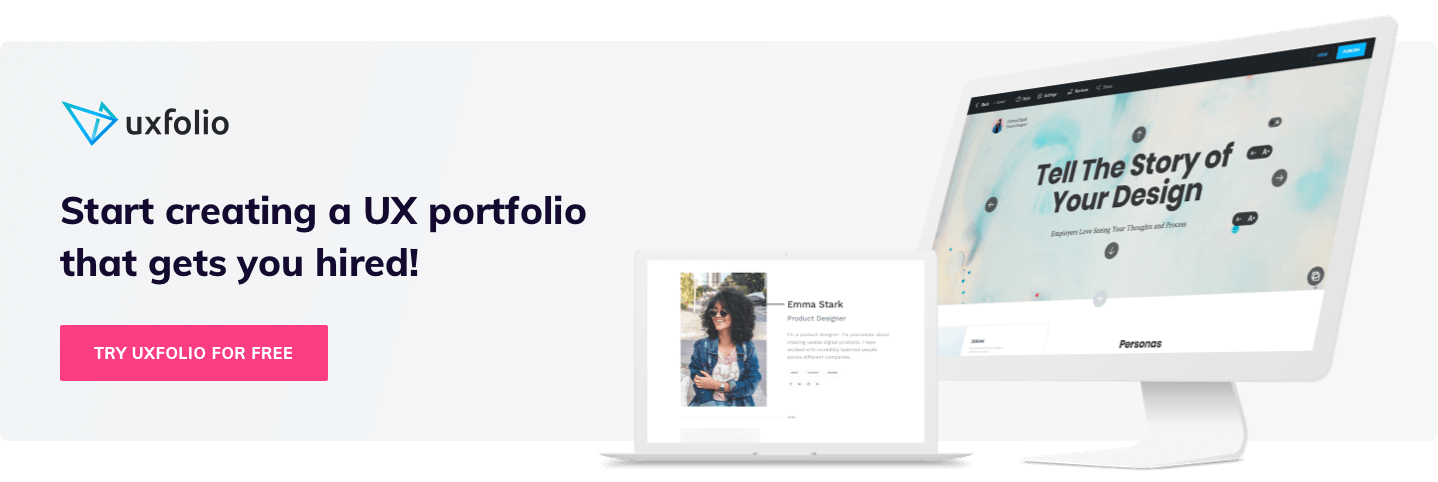
UX leads and recruiters want to hear about your
- Role : What were your responsibilities in the project?
- Team : How and who you worked with? (stakeholders, developers, designers, product managers, etc.)
- Design story : What ideas lay behind your design?
- Design decisions : How you translated business or user needs into your design?
- Way of thinking : Why you did what you did during the project?
A case study is the best format to present your work, as it provides wholesome answers to all these questions. Fortunately, a good UX portfolio is made up of case studies.
How to prepare for the presentation?
Forget about printed-out slides! Why would you waste paper when you can bring your computer or tablet to the interview? You can ask any HR manager or team lead: They prefer digital presentations. After arriving at the venue, just ask for the wi-fi password at the reception and you are set.
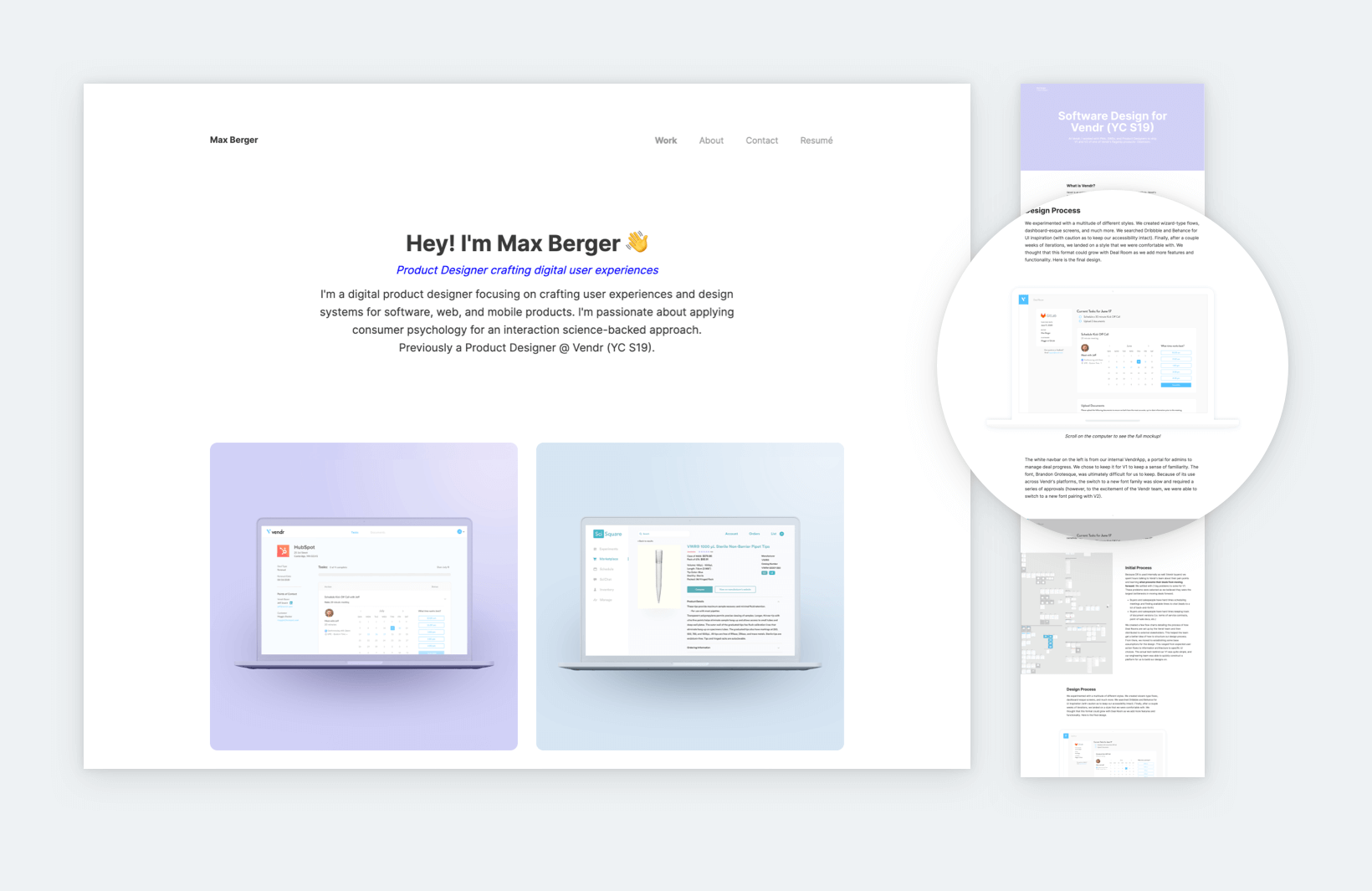
Case studies
Putting together a case study is the best preparation for a portfolio presentation. By the time you are finished, all threads will connect in your mind and you will know the conclusion they lead to. Also, when your thoughts are collected, your interviewers will find it easier to follow along.
For a start, create an outline from the stages listed in your case study. Just remember that you might not have time to present every little detail, so consider the following questions:
- Which parts are necessary for comprehension?
- Which part is the most powerful?
- Which part can help you get the job at hand?
If you spend enough time on your case study, you will know which parts best represent your skills.
Once you know what you want to say, you just have to practice saying it aloud. Do not underestimate the effects of a rehearsal! The more you rehearse the more relaxed and confident you’ll feel. The goal is for you to present a project from beginning to end without having to look at your notes or reading from your case study. In a few attempts, you will be there!
How to structure a UX portfolio presentation in an interview?
Storytelling is at the heart of an outstanding UX portfolio presentation. We collected ten steps with examples to help you present the story of your design in a compelling way. Keep in mind that these examples come from different projects. (You can also see more UX portfolio examples and UX case study examples at UXfolio .)
1. Introduce yourself and give an overview
Start the presentation by introducing yourself, your role, and your specialization. Tell your interviewers what excites you the most about your job and what are your areas of expertise. Then prepare the interviewers for the presentation by breaking down how you’ll structure it.
Finish the introduction by talking about the projects in your portfolio. Share some information about the field (e.g., healthcare, sports) and the project type (e.g., redesign, purchase flow), but do not go into detail yet!
2. Tell which project is your favorite and why
UX leads and recruiters want to hire passionate problem-solvers who can handle the entire design process. So, it is likely that they will ask you to give a walkthrough of your favorite project. You should choose one that excites you and highlights most of your skills.
Before you get into the gist of it, set up the stage by answering the following questions:
- Why is this your favorite project?
- What is the project about?
- Who is it intended for?

3. Talk about the team setup, your role, and activity in a project
Talk about your role and place in the team. Many candidates forget that for most positions they must be effective team workers. There is no better way to prove that than talking about your role as part of a whole.

4. Explain the main challenge
With the background information covered, it is time to reveal the challenge that will tie your design story together. It could be anything from a business issue to a user pain. Just explain it in detail!

5. Describe your process
Start with a brief outline then describe your design process step-by-step without going into too much detail. You don’t have to over-explain every technical detail. Your interviewers are aware of the basics. Instead focus on your why-s, to reveal your thought processes and reasons.

6. Mention UX methods and user insights
Listing UX methods without context is the biggest mistake applicants make. For each method, you must share how it influenced your design, otherwise, it is pointless to mention them. Another colossal mistake is forgetting about users after the intro. It is User Experience for a reason, so share what you learned about them and how!

7. Show your solution
When talking about your solution, reflect back to the challenge that you have introduced at the beginning of your presentation. Talk about the pros and cons of all the potential solutions that you have considered and explain why you chose the one you did.
8. Elaborate on one major design decision
This is your moment to shine! You can prove your potential by explaining an impactful or unexpected design decision you took. Underpin your decision with the user needs or pains that necessitated it.

9. Showcase the results
After hyping up the solution in the previous section, it is time to reveal it: Show final screens, feature statistics, and quote the stakeholders. Statistics are particularly important since they prove that your work contributes to shared goals.
10. Share your learnings
Finish the UX portfolio presentation with learnings to show your willingness to grow as a designer. Take an assumption you had when the project started and tell your interviewers how it changed by the end. Even better, tell how these learnings have influenced your process: “Since this project, I always do [this thing in that way] for this reason.”
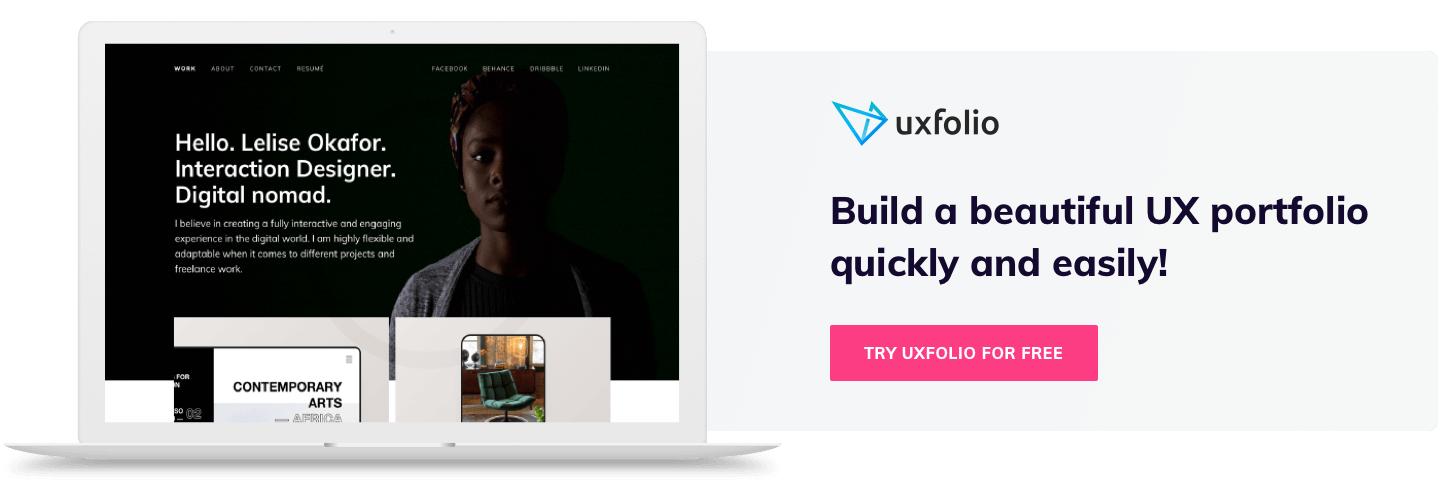
Considerations during a UX portfolio presentation
An enormous part of your success depends on the structure of your UX portfolio presentation. However, we cannot deny the importance of the way you are presenting it. Always consider the following things:
- Time. Consider time as early as the planning phase. It makes a major difference if you have 10 minutes or 30 to showcase your work. Have a plan ‘A’ and ‘B’.
- Complexity. Present your work in an easy-to-understand way. You can also give a layout to your interviewers. If the project is in a field with lots of jargon and complex concepts, keep their use to a minimum or explain them in brief.
- Show excitement. Design leads want to work with passionate people who love and care about what they do.
- Come prepared and open to common UX designer interview questions. If they ask you about the details, they want to know more about you and your way of thinking – a good sign! They won’t judge you on your design decisions, as they don’t have enough information to do so. They just want to see you have made conscious, well-thought-out decisions.
- Open the floor for questions. Your interviewers will have questions regardless, so this is more of an act of courtesy.
- Ask for feedback. Show your openness and your desire to improve. If you can, take some notes as well! And don’t forget to thank them for their time.
Remote UX portfolio presentation tips
More and more companies are open to remote interviews, which some find a blessing, others a curse. The problem is that it is much harder to make a lasting impression remotely than in person. But it is possible! Start by sorting out the basics:
Clean up your act and your room
Though you will be logged in from home, dress up and groom yourself as you would for a regular interview. Tidy up your room too, or at least the part that they will see. The goal is to appear composed.
Close your tabs, bookmarks, and windows
Let’s be honest: when someone shares their screen, our eyes get drawn to their open tabs and open windows. It’s human nature. So, before your presentation starts, close your tabs and sort out bookmarks! They slow down your computer, and you can get lost in them in front of your potential employer. Such a situation can be very frustrating, and it can lead to you losing momentum. Don’t forget about your windows and notifications either!
Test your equipment
Before the interview begins, give a restart to your computer to make sure it’s not overworked. Presenting while your screen is lagging can ruin the entire experience. So, make sure that your camera and microphone are working. Clean your screen and the lens of your camera so you can see and be seen. Finally, find a comfortable angle and good lighting.
Look into the camera and nod
From time to time, look into the lenses of your camera. This the digital equivalent of keeping eye contact with your interviewers. Also, when they are talking to you, nod lightly, so they can see that you hear what they are saying. The rest of your interview should go just as an in-person interview would.
Start building your portfolio today!
UXfolio is the easiest way to build a sleek UX portfolio and case studies. It will help you tell your design story with guiding questions and writing prompts. What’s more, UXfolio provides plenty of stunning solutions for you to showcase your wireframes, prototypes, and UIs. Try UXfolio free today!
- Reviews / Why join our community?
- For companies
- Frequently asked questions
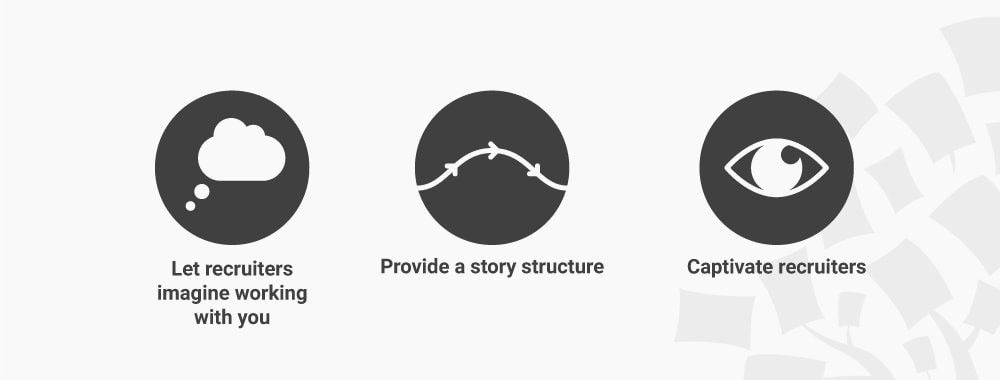
How to Write Great Case Studies for Your UX Design Portfolio
Well, the answer is really simple: write your UX case studies like stories. You see, when you present your case study as a story, you’ll find it far easier to give it a satisfying structure and captivate your reader. What’s more, you’ll make it easy for recruiters to imagine what it’s like to work with you, as they get to understand how you work. This makes your case study powerful and increases your chances of getting your first interview. Let’s take a closer look at what makes story-based case studies so impactful.
Since your case studies first and foremost serve to help you get an interview in your job application, they should answer the following questions (grouped into three categories, based on you as a person, your skill set and the way you do things):
Who are you? What drives you and what’s your background?
What UX skills do you possess?
How do you approach and solve a problem? How do you work with others?
As it turns out, when you tell a narrative through your case studies, you answer these questions effectively. Here are the 3 main reasons why you should write your UX case studies like stories and how this helps you stand out from other applicants.
Because Stories Allow Recruiters to Imagine What it’s Like to Work with You
“Narrative imagining—story—is the fundamental instrument of thought. Rational capacities depend upon it. It is our chief means of looking into the future, of predicting, of planning, and of explaining.” —Mark Turner, cognitive scientist and author
When a recruiter reads your case study, they want to find out if you’ll be a great addition to their team. They want to know not only if you have the right skills and attitude, but also whether they’d enjoy working with you.
When you tell a story, you make it intuitive for a recruiter to imagine what it’s like to work with you . That’s because we use stories to learn and imagine all the time—in fact, people have since the dawn of human history. Therefore, recruiters will find it easier to look into the future and predict if they’d like to work with you when they read a story-based case study. They’ll find it easier to understand who you are and how you solve a problem.

Since the dawn of human history, we have used stories to imagine and learn about our world. Help recruiters understand you by telling a story about your design process .
© Mike Erskine, Fair Use
This sentiment is echoed by Sarah Bellrichard, Senior Vice President of Wholesale Internet Solutions & UX at the American bank Wells Fargo. She shared her tip on case studies and interviews:
“My tip would be, tell stories. When designers present a flat portfolio it doesn’t tell me about how they approach the work they do and how they deal with the ebbs and flows of design. Tell me how you navigate from start to end of a project.” —Sarah Bellrichard, SVP of Wholesale Internet Solutions & UX, Wells Fargo
Because Stories Give Your Case Studies Structure
“Sometimes reality is too complex. Stories give it form.” —Jean Luc Godard, French-Swiss film director
If you’ve worked on a design project before, then you’re painfully aware of just how messy life can be. Deadlines change, project goals shift, and new findings can fundamentally alter design specifications .
Stories will give your past experiences form and make your case studies better organized . You can re-arrange your experience into a meaningful sequence of events—i.e., progress—towards your results. Otherwise, your case study will likely seem chaotic.
The arc of a story—introduction, middle, conclusion—is the perfect order to tell your messy progress towards a project’s final results. Let’s illustrate:
In the introduction :
You set up the context of your project, for instance through a design brief .
You introduce your team’s main goals and some of the main obstacles you faced
In a classic story, this is where we meet the heroes and learn about the venture/goal they’re reaching for and why they’re not satisfied with their current lives.
In the middle :
You illustrate your approach to solving the problem.
You bring your reader through your journey of how you used industry standard practices to tackle the problem. It’s important that you describe what you did and what your team members did, so the recruiter knows what skills and knowledge you possess.
In a classic story, this is where we follow our heroes struggling to conquer the beasts, villains and problems as they strive to reach their goals.
Finally, in the conclusion :
You showcase the final product and the results you and your team achieved.
You reflect upon what you’ve learnt and recount any follow-up tweaks you’ve made to the product.
In a classic story, this is where the heroes reach their goals―they experience personal growth , reap the rewards of their hard work and live happily ever after.
See how nicely it all fits into a story arc?
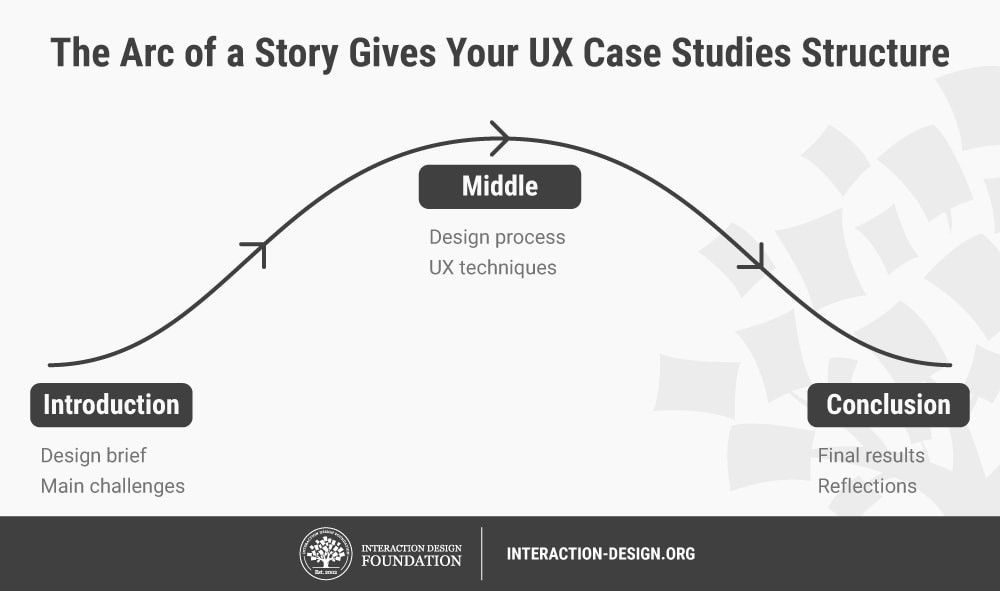
When you arrange your case study in a story arc, your journey becomes more ordered and meaningful.
© Teo Yu Siang and the Interaction Design Foundation, CC BY-NC-SA 3.0.
There’s more! You’ll also find it easier to write your case study when you arrange it like a story. You see, the introduction-middle-conclusion structure of a story forms a skeleton for you to fill in the “meat” of your journey. On top of that, recruiters who read your case study will also find the familiar arc of a story satisfying. Talk about a win-win situation!
Because Stories Captivate
“Tell me the facts and I’ll learn. Tell me the truth and I’ll believe. But tell me a story and it will live in my heart forever.” —Native American proverb
Okay, your case study will most likely not live in your recruiter’s heart forever, but your story-based case study will definitely stand out from other purely fact-based case studies, as your story will engage and captivate your recruiter. You see, a narrative is more engaging and provides a better reading experience than a dry, factual account ever could. It naturally makes the reader feel involved in the story and weaves a common thread throughout the case study.
UX recruiters are incredibly busy. They’ll typically spend only 5 minutes scanning your case studies because they have so many applicants to process. Given that, you have a much better chance if you can capture your reader’s attention for the whole 5 minutes.
And there’s no better way to captivate someone than through a story.
Let’s demonstrate that in an ultra-brief case study―yours should be more detailed and in-depth. Below, you’ll find the same journey told in two ways: first in a factual manner, then in a narrative fashion. See which version you find more engaging.
Factual : User interviews were conducted with 12 people to evaluate the effectiveness of the prototype . The main finding was that the assumption that users shopped based on their weekly nutritional needs was invalid. This finding was used to create a new iteration of the product, which was tested and found to be 50% more successful than the previous version.
Narrative : We conducted interviews with 12 people to evaluate if our prototype was effective. Our finding threw a giant spanner in the works. We realized our assumption—that users shopped based on their weekly nutritional needs—was dead wrong. Undefeated, we scrambled to create a new iteration, and ran another round of tests. This time, it worked—the success rate shot up by a whopping 50%!
You probably find the narrative version way more interesting—and so will your recruiters.
Notice in the factual version how flat and lifeless the account is? Sure, the figures are there, but it looks as if you’re reporting on what someone else did. This tells a recruiter that you’re distant and non-engaged—that you didn’t take ownership in what you’re talking about.
So, embrace the liberating and captivating format of a story. Go ahead and describe how your finding proved you dead wrong and how you scrambled upon meeting a temporary setback.
Best practice:
Convey your emotions and write in an active, engaging tone of voice .
Include the team’s frustrations, problems you faced and new insights you learnt.
Include people: write “we”, “I” and “our team”.
This way, you’ll give your case studies flavor . Furthermore, you’ll reveal who you are and how you work―and your recruiters will come back for more.

Stories naturally captivate us—use that power to captivate your recruiters, too.
© Prasanna Kumar, Fair Use
Turn Your Case Studies into Stories
Of course, we’re not saying that you should write a novel to explain what happened in your project. Your case studies should still be short and sweet, but they also should be punchy and engaging.
In fact, when we sat down with Stephen Gay, Design Lead at Google’s AdWords, to ask him about the importance of a portfolio, he explained that he sees UX case studies as stories about the applicants.
- Transcript loading…
To a recruiter like Stephen Gay, case studies are stories that tell him about the applicants. Author / copyright holder: The Interaction Design Foundation. Copyright terms and license: CC BY-NC-SA 3.0.
As Stephen astutely pointed out, we UX designers regularly use the power of stories in our work. So, use this same storytelling approach in your case studies, too!
The Take Away
The best way to write a case study is to tell it like a story. This way, your case studies become a vessel through which recruiters can imagine a future working with you, since they get to experience and understand exactly how you solve a design problem. Your recruiters will also enjoy the familiarity and structure of a story arc, and they’ll find the reading experience much more engaging. So, go ahead—inject humanity, color and passion into your case studies. Be a storyteller.
References and Where to Learn More
You can find Sarah Bellrichard’s tip on case studies in this article by Justinmind, which gathers tips and insights on how to do well in interviews.
Hero image: © Rawpixel, Fair Use.
Design for the 21st Century with Don Norman

Get Weekly Design Tips
What you should read next, understand color symbolism.
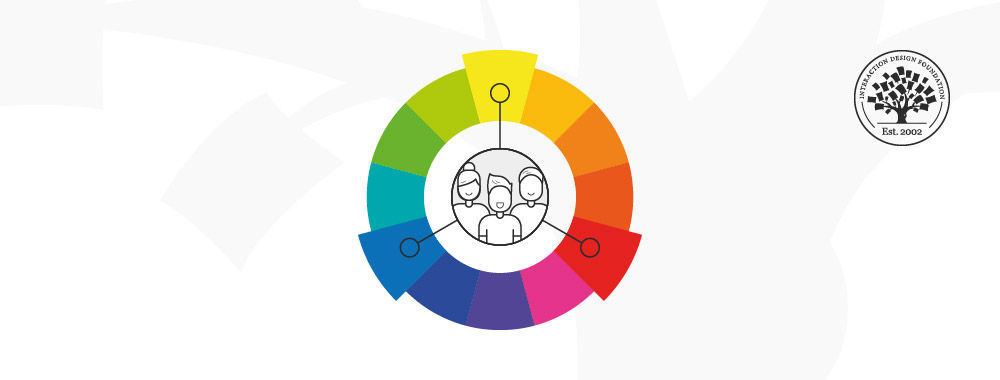
Our Three Brains - The Emotional Brain
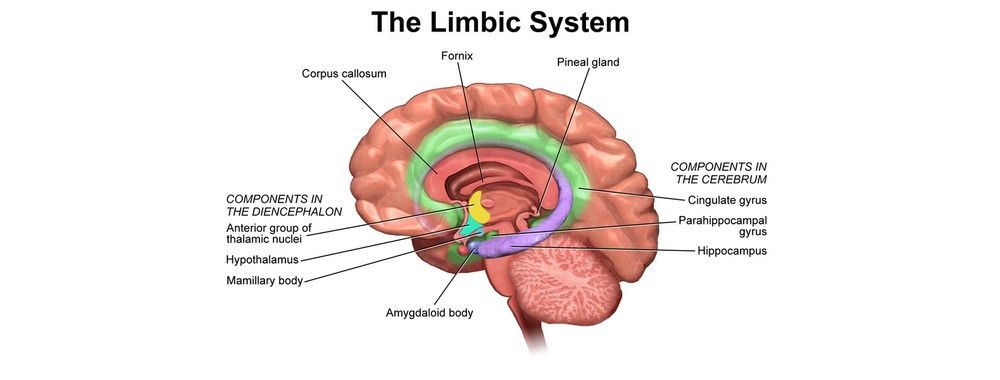
Empathy Map – Why and How to Use It

- 1.2k shares
Master Mobile Experiences: 5 Key Discoveries from the IxDF Course
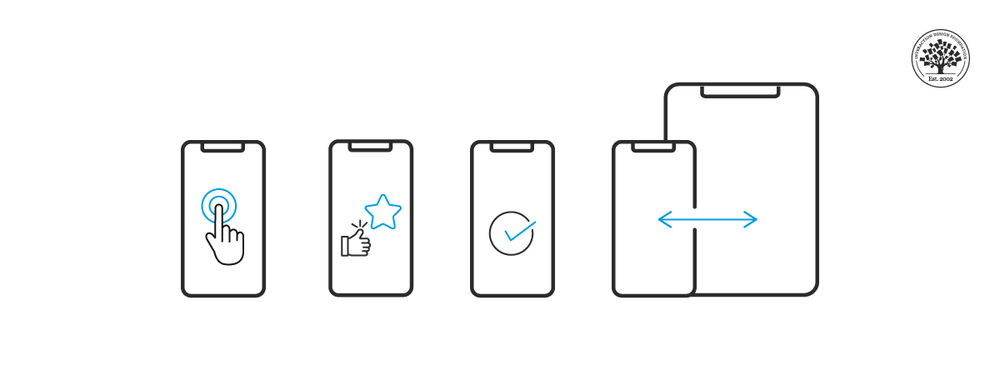
Design for Virtual Reality: Top Learnings from the IxDF Course
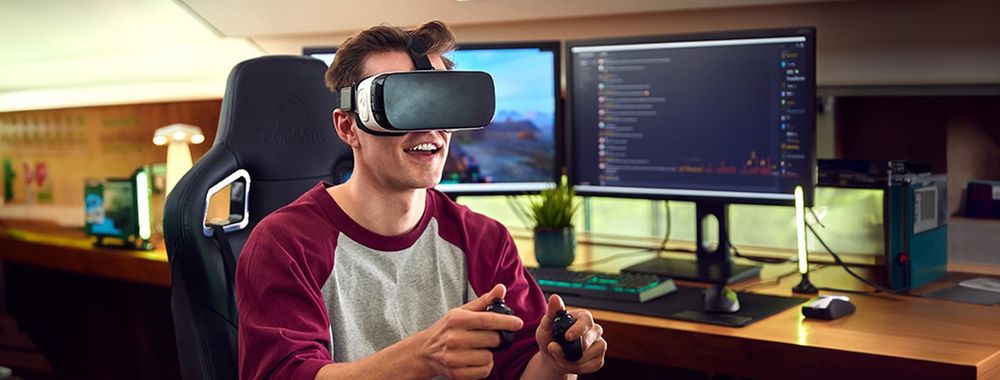
Human-Computer Interaction: Top Insights from the IxDF Course

3 Reasons Why Your Users Love (or Leave) You

Everything You Need To Know About Triadic Colors
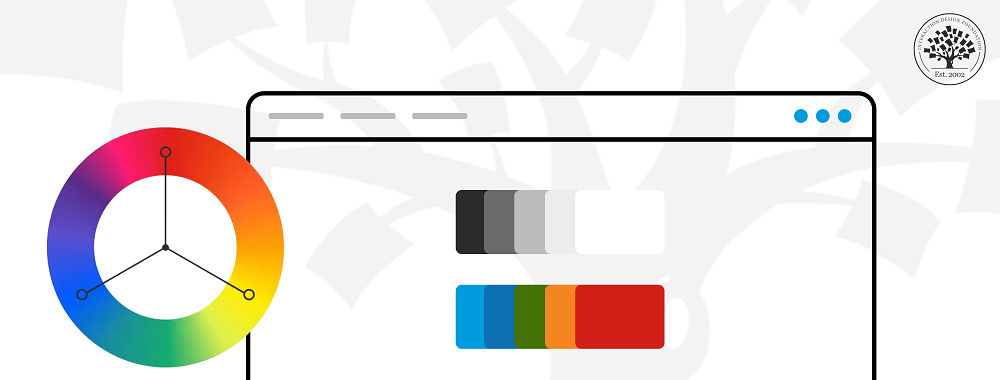
- 2 weeks ago

Mobile UI Design: Top Insights from the IxDF Course
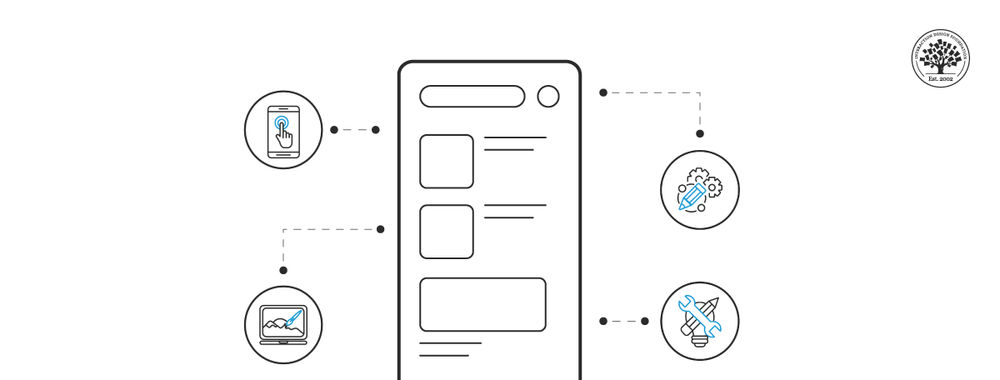
AI Challenges and How You Can Overcome Them: How to Design for Trust
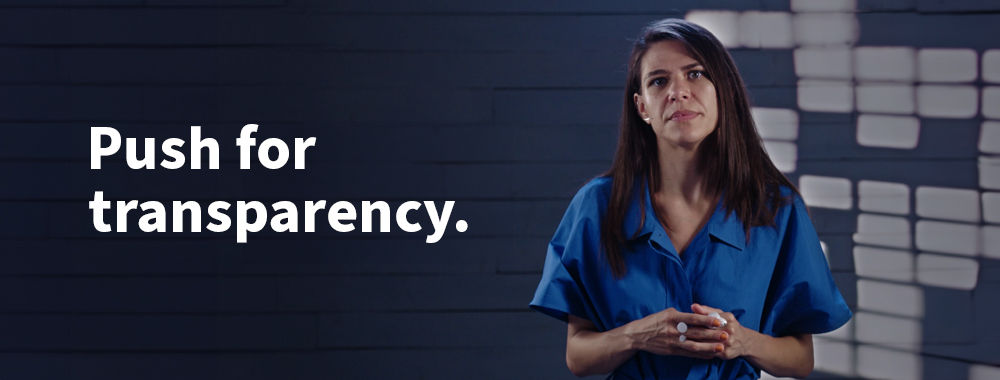
Open Access—Link to us!
We believe in Open Access and the democratization of knowledge . Unfortunately, world-class educational materials such as this page are normally hidden behind paywalls or in expensive textbooks.
If you want this to change , cite this article , link to us, or join us to help us democratize design knowledge !
Privacy Settings
Our digital services use necessary tracking technologies, including third-party cookies, for security, functionality, and to uphold user rights. Optional cookies offer enhanced features, and analytics.
Experience the full potential of our site that remembers your preferences and supports secure sign-in.
Governs the storage of data necessary for maintaining website security, user authentication, and fraud prevention mechanisms.
Enhanced Functionality
Saves your settings and preferences, like your location, for a more personalized experience.
Referral Program
We use cookies to enable our referral program, giving you and your friends discounts.
Error Reporting
We share user ID with Bugsnag and NewRelic to help us track errors and fix issues.
Optimize your experience by allowing us to monitor site usage. You’ll enjoy a smoother, more personalized journey without compromising your privacy.
Analytics Storage
Collects anonymous data on how you navigate and interact, helping us make informed improvements.
Differentiates real visitors from automated bots, ensuring accurate usage data and improving your website experience.
Lets us tailor your digital ads to match your interests, making them more relevant and useful to you.
Advertising Storage
Stores information for better-targeted advertising, enhancing your online ad experience.
Personalization Storage
Permits storing data to personalize content and ads across Google services based on user behavior, enhancing overall user experience.
Advertising Personalization
Allows for content and ad personalization across Google services based on user behavior. This consent enhances user experiences.
Enables personalizing ads based on user data and interactions, allowing for more relevant advertising experiences across Google services.
Receive more relevant advertisements by sharing your interests and behavior with our trusted advertising partners.
Enables better ad targeting and measurement on Meta platforms, making ads you see more relevant.
Allows for improved ad effectiveness and measurement through Meta’s Conversions API, ensuring privacy-compliant data sharing.
LinkedIn Insights
Tracks conversions, retargeting, and web analytics for LinkedIn ad campaigns, enhancing ad relevance and performance.
LinkedIn CAPI
Enhances LinkedIn advertising through server-side event tracking, offering more accurate measurement and personalization.
Google Ads Tag
Tracks ad performance and user engagement, helping deliver ads that are most useful to you.
Share Knowledge, Get Respect!
or copy link
Cite according to academic standards
Simply copy and paste the text below into your bibliographic reference list, onto your blog, or anywhere else. You can also just hyperlink to this article.
New to UX Design? We’re giving you a free ebook!

Download our free ebook The Basics of User Experience Design to learn about core concepts of UX design.
In 9 chapters, we’ll cover: conducting user interviews, design thinking, interaction design, mobile UX design, usability, UX research, and many more!
New to UX Design? We’re Giving You a Free ebook!

A rapid desktop prototyping tool

Mockplus - Design Faster. Collaborate Better.
Prototype, design, collaborate, and design systems all in Mockplus
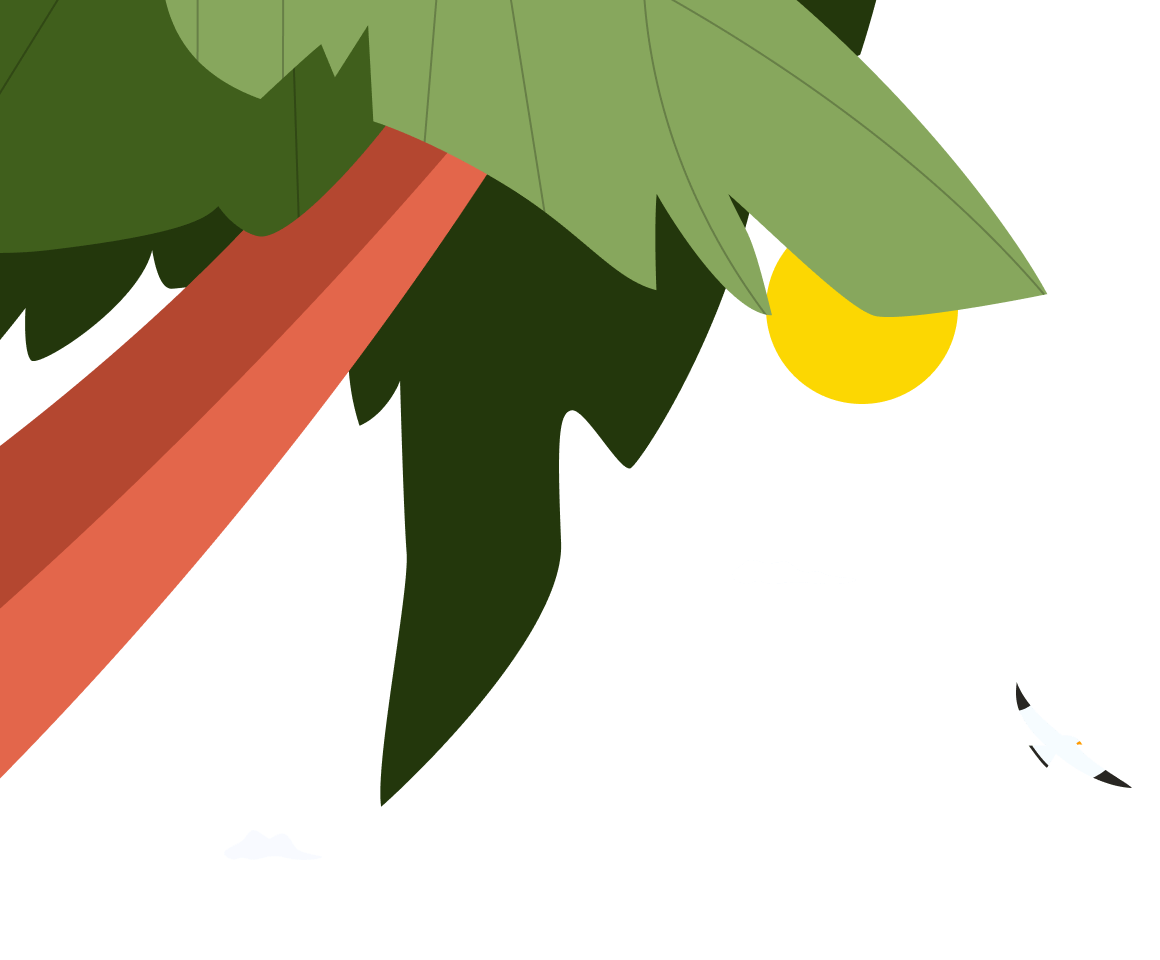
Top 22 Stunning UX Case Studies You Should Know in 2022
An immersive yet well-structured UX case study helps UX professionals show off their design talents in portfolio websites, and let them communicate better with employers, designers and others easily.
However, as a UX designer , how can you write a perfect UX case study to easily get hired or communicate with others better?
Mockplus has handpicked 22 of the best UX design case study examples in 2022 to help you get inspiration, improve your portfolios and make your own things with ease. A step-by-step guideline about how to create a UX case study is also followed.
What is a UX case study?
A UX case study tells the story of how you create a great website or app and, in particular, what you do to improve the UX of the site. UX designers—newbies and experts alike—will often share a case study on a portfolio website as a great way to get hired. Just like sending a resumé.
So, it is a lot more than just a copy of everything you've done while designing the project. To really showcase your design talent and the breadth of your abilities, you need to make sure the following are all included:
- A full description of your role in the project;
- The biggest challenges you've faced;
- The solutions you've chosen, how you chose them and why;
- How you communicate and collaborate with others; and
- The outcomes and the lessons you’ve learned.
To this, you should feel free to add any further information that you think would help you stand out from the crowd.

It is also worth remembering that UX case studies are a good resource for UX design beginners to learn more practical design skills and to gain from the real experience of others in dealing deal with difficult or urgent problems.
22 Best UX case study examp le s you should learn
Whatever stage you’re at and whatever you are writing your case study for, these 22 top examples are bound to inspire you.
1. Perfect Recipe -UX design for cooking and shopping
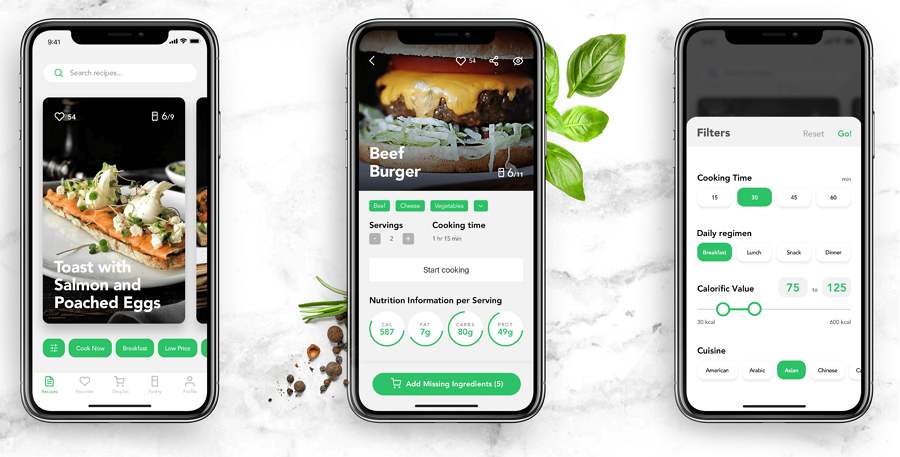
Designer s : Marina Yalanska and Vlad Taran
Case Study : Perfect Recipe
This is a mobile application that enables users to search for food recipes and to buy what they need to cook different dishes.
Why d id we choose this one?
This case study illustrates the entire UX design process is very simple, plain language. Many aspects of the process are included, along with some really inspirational ideas, such as product personalization, challenges and solutions, animated interactions, and other interface details.
Extra tips :
This example is from the Tubikstudio blog, which is very popular among designers. It regularly shares different branding, UI, and UX case studies. We would strongly recommend that you follow this blog to keep yourself up to date with the latest and most creative case studies.
View details
2. GnO Well Being - Branding, Web Desing & UX

Designer : Marina Yalanska and Olga Zakharyan
Case Study : GnO Well Being
This is a creative illustration website that presents and sells a weighted designer blanket that helps you get a good night’s sleep, the first step to good health and a better life.
Why d id we choose this ?
This example is so much more than a great UX case study. In addition to the UX design , it gives you insight into many more key design issues, such as the logo, custom graphics, website pages, interactions and so on. There are many ideas here that you could copy for your own projects.
3. Splitwiser - UI/UX case redesign

Designer : Chethan KVS (a Product designer at Unacademy)
Case Study : Splitwise
This is a concept mobile app that enables users to track and split expenses with friends. The designer has also given it another name, "Splitwise."
Why do we choose this ?
This case study shares the designer's insights into key design decisions, such as why he chose this product, why he decided to redesign the logo, how to improve the onboarding and other pages, how to optimize the user flow, how to balance all pages and functions, how to enhance UX through bottom bars, interactions, gestures, view modes, and more.
Everything is explained using intuitive images, earning it thousands of “likes”. This is a great example that is bound to help you write a stunning case study on redesigning UX.
This comes from a popular media channel called "UX Planet" that regularly posts examples of the best and latest UX case studies from around the world. Another great place to keep you up to speed with the latest UX designs.
4. Deeplyapp.com - UX & visual improvements
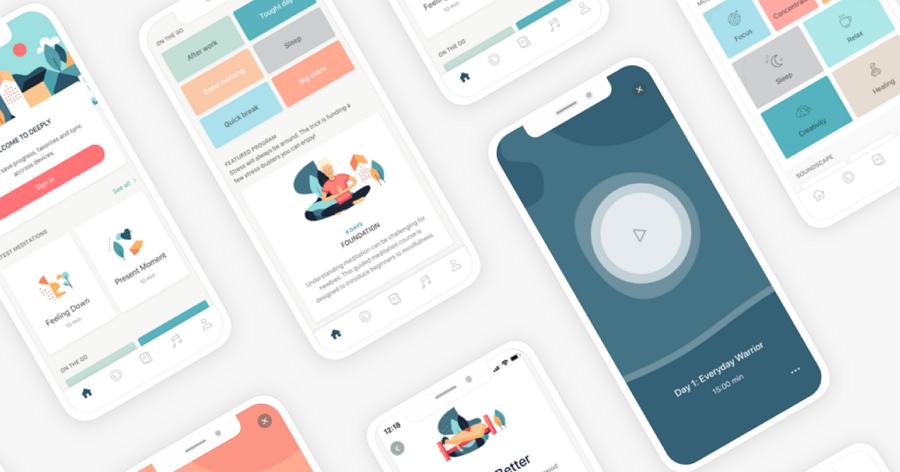
Designer : Sladana Kozar
Case Study : Deeplyapp
This is a health and self-care website app that helps users maintain mental well-being with meditations and exercises. This case study talks you through the design process of creating a user-friendly mobile app.
This case study focuses on improvements to the UX and visual features of this mobile app. Many aspects are included to help you understand it better, such as the design background, what to build, UI flow diagram, discoverability design, visual balance, and much more. A full set of app interfaces are presented for you to study as well.
You can also check out its Part 1 post for more details.
5. Talent Envoy - improving the recruitment process

Designer : Enes Aktaş (Experienced UX designer)
Case Study : Talent Envoy
Talent Envoy is an intelligent job assistant that helps users find their ideal job and get to all the way to signing a contract faster and more easily.
This case study firstly points out the biggest challenges and problems faced by job-seekers—the shortage of US recruitment markets. It then talks to you through the detail of how the designers optimized the recruitment process. You will also find information on the user research process, the UI flowchart design, the related wireframe and Sketch designs, the main page design, and more.
All the details have clear explanations and they offer a great example of how to use user research to solve problems and improve UI interfaces.
This one comes from another hot media channel called "Muzli" which shares the latest ideas, designs, and interactions about websites or website apps from all over the world. Don’t miss out on this site if you want to stay ahead of the curve.
6. My Car Parking - UI/UX case study
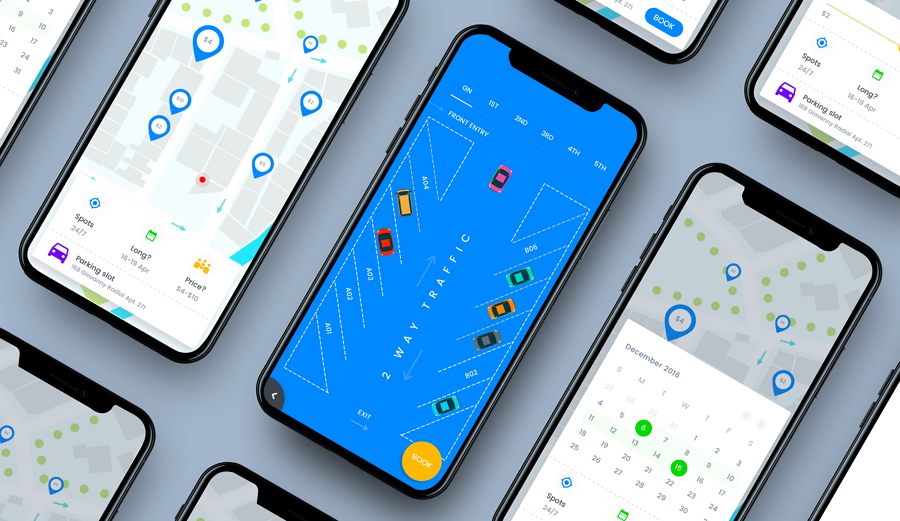
Designer : Johny Vino (Experienced UX and interaction designer)
Case Study : My Car Parking
This is a mobile app that can help people get parking slots easily even when they travel beyond their normal routes.
This is a masterclass in how to write a case study that is simple, well-structured, and easy to understand. Many intuitive lists and images are used to explain the design ideas and processes.
It has received “claps” from over seven and a half thousand people and is a perfect example of how to write a well-structured and easy-to-understand case study.
7. Parking Finder App - UI/UX case study
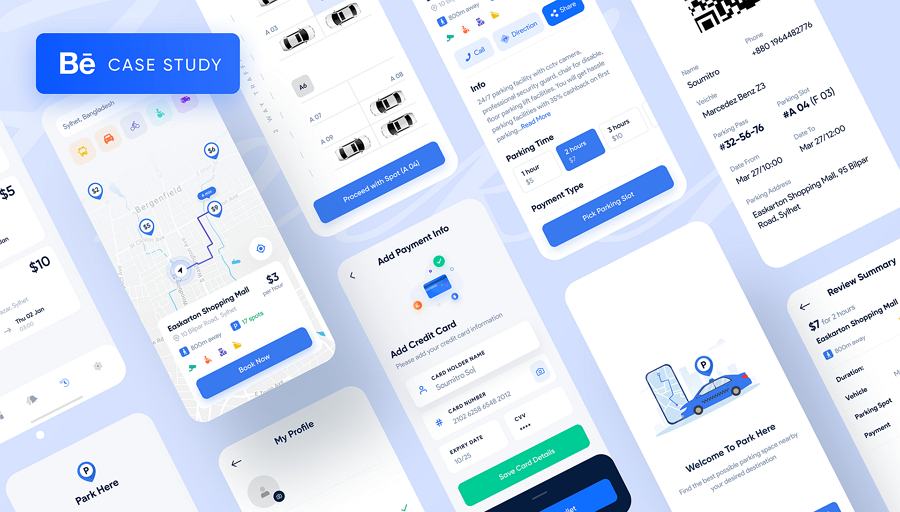
Designer : Soumitro Sobuj
Case Study : Parking Finder App
This is another concept mobile app that makes it easy for users to find parking slots even in big or overcrowded cities.
This case study is beautifully presented and gives a good presentation of the whole design process. It covers nearly all the issues that a textbook UX case study should have, such as problems and solutions, user-centered design, design strategy, user flow, information architecture , interface wireframes and visual designs, and much more besides.
It is one of the best examples we have found of a case study that really teaches you how to write the perfect UX case study.
8. Pasion Del Cielo - coffee ordering experience

Designer : Jonathan Montalvo (Senior Designer, Branding, UXUI )
Case Study : Pasión del Cielo
This is a concept project about a real local coffee shop in Miami.
This case study demonstrates effective ways to engage users with the Pasión brand and how a site can make it as easy as possible to turn page views into coffee sales.
There is a lot of analysis included to explain the entire design process, such as analyzing the competition, feature analysis, brand and interface improvements, and much more. Most important of all, many user personas have been created to evaluate and enhance the UX.
This is a good example to check for anyone looking to improve their own UX case study. Above all, it shows what can be done with rich images, bright colors, clear layouts, and well-crafted personas.
9. Workaway App - UX redesign
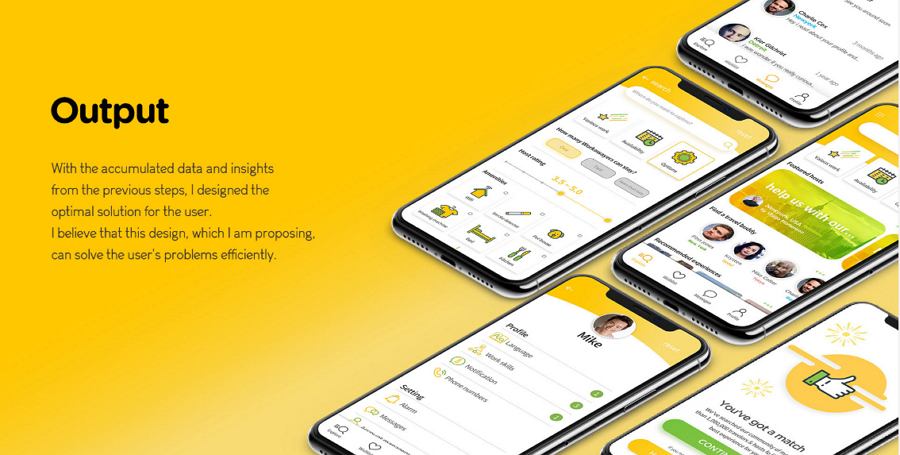
Designer : Rocket Pix (UXUI, web designer )
Case Study : Workaway App
This is a mobile app that provides international hospitality services; it helps users to contact each other to organize homestays and cultural exchanges.
This UX design case study explains how the designer redesigned the Workaway App to make it easier for users. Many intuitive charts (pie charts, flow charts, line charts), cards, and images are used to illustrate the ideas.
It is simple and easy to follow, and also a good example of how to create an intuitive case study with charts and cards.
10. Receipe App - UI/UX design process
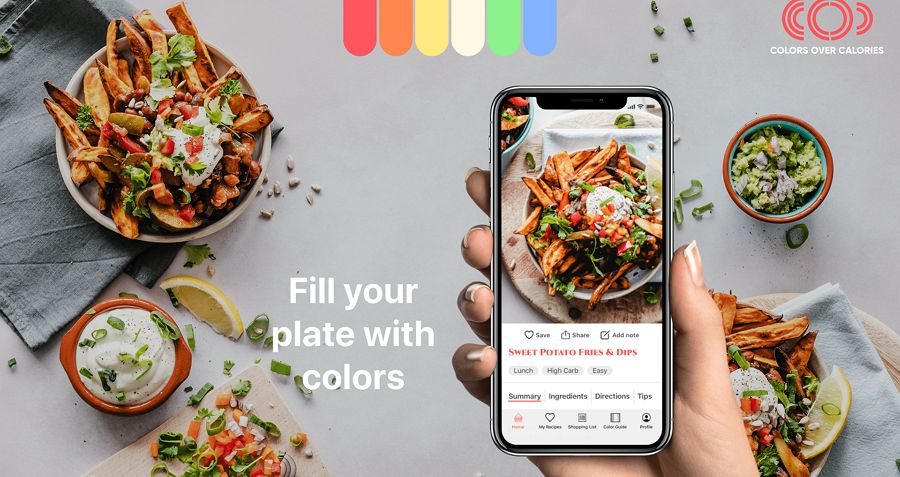
Designer : Dorothea Niederee (UX, UI designer )
Case Study : Recipe App
This is a food app design offering inspirational recipes for anyone who wants to eat healthier.
This case study gives a clear demonstration of the entire UI/UX design process. Three user personas are defined to present different users' needs. Some colors, typography, and UI elements are also shared.
This is a good example of how to define a detailed user persona in your UX case study.
11. Hobbfyy - a social and discovery app UX design
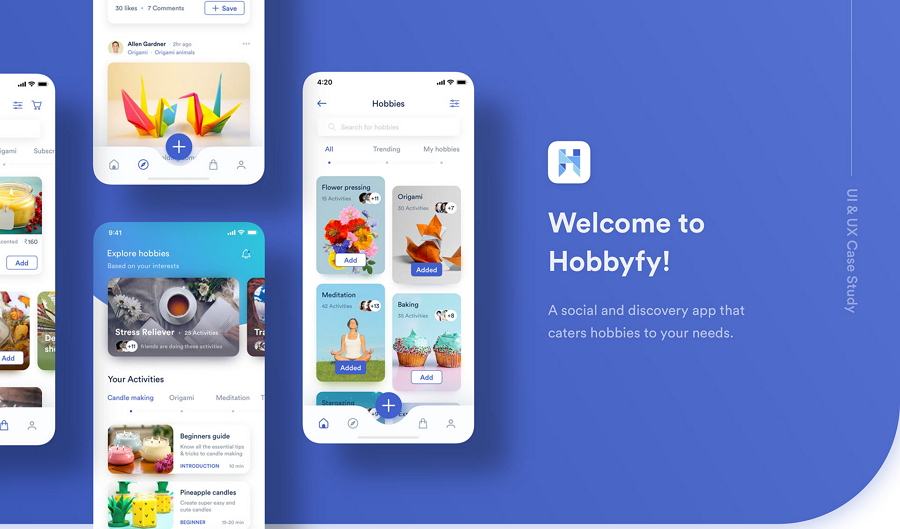
Designer : Mustafa Aljaburi (UX, UI designer )
Case Study : Hobbfyy
This is a social and discovery app that makes it quick and easy to get everything you need for your hobbies.
This case study aims to show how to develop a site that will provide its users with solutions, in this case to get what they need for their hobbies. Beautiful images, a storytelling style, and special layouts are used to explain everything.
12. Bee Better - habit tracker app UX case study

Designer : Anastasiia Mysliuk (UX, UI designer )
Case Study : Bee Better
This is a habit tracker app that makes it easy for you to develop new useful habits.
This case study aims to solve problems associated with how we form and develop habits. It helps users find solutions and make habit formation more interesting; it motivates them to maintain their useful new habits. Many aspects of design, such as problems, solutions, the design process, discovery and research, user journey map, prototypes, and much more are illustrated and explained in simple language.
This would be a good example to follow if you are looking to create an easy-to-understand UX case study.
13.Sit My Pet - pet sitting app UX case study
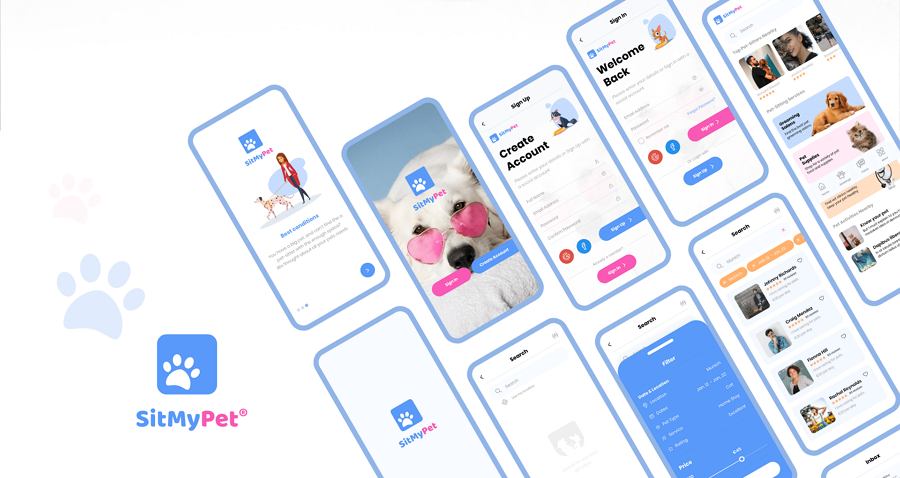
Designer : Aiman Fakia (UX, UI, visual designer )
Case Study : Sit My Pet
This is a pet-setting app that provides pet owners with a digital service that helps them connect with pet sitters.
This UX case study describes a site that aims to make pet sitting more easily accessible for pet owners. It analyzes both its users and its competitors very well. The way solutions are evaluated, the user stories, and other related aspects are followed in detail to give you a better understanding of the project as a whole.
This is a good example of how to develop a UX design based on user needs.
14. Groad - food ordering system UX case study
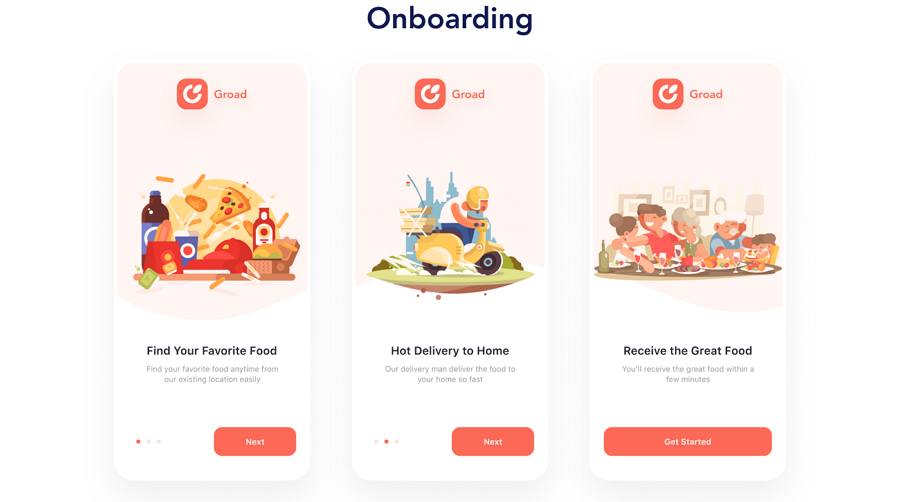
Designer : Phap (UI designer )
Case Study : Groad
This is a food ordering app offering food delivery services from stores, restaurants, cafés, fast food bars, and others.
This UX case study uses beautiful illustrations and colors to explain the entire design process. As well as the usual parts of the design process—UI flow chart, UI showcasing—the related logo and icon designs, typography, and other aspects are included. This is a good example if you are looking to learn how to create an immersive case study with beautiful illustrations and colors.
15. iOS VS Android UI/UX Case Study

Designer : Johanna Rüthers
Case Study : Econsy
Here is another concept app that helps people live more sustainably by using a scanning process to give them information about the ecological and social impact of products they are thinking of buying.
This case study explains the differences in the mobile app’s appearance when it is applied on the Human Interface Guidelines (IOS) and Material Design Guidelines (Android). This will help you to create an app that works well on both Mac and Android devices.
More UI/UX case studies & designs:
16.Timo Bank - UI/UX Case Study
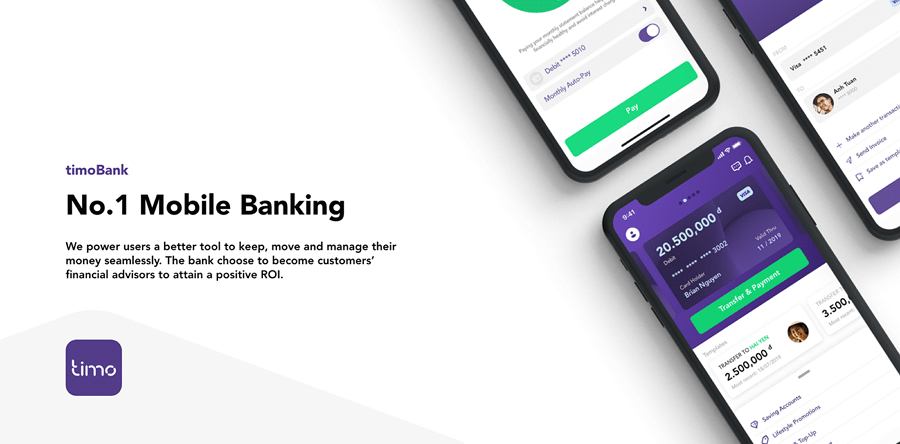
Timo Bank is a mobile banking app project produced by Leo Nguyen, a freelance designer and creative director. This case study aims to provide more intuitive transfer, payment, and money management solutions for mobile users.
This is a great example to consider if you are hoping to create a better banking app.
17. Endoberry Health App Design
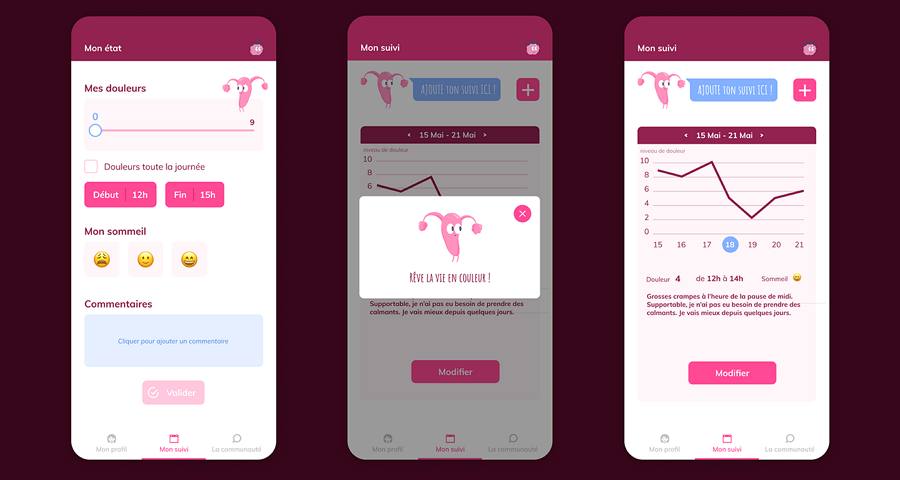
Endoberry Health App Design provides useful solutions for women suffering from endometriosis. In turn, this gives doctors a better understanding of individual cases. The design challenges, solutions, and UI details are displayed and explained to illustrate the design project.
18. Job Portal App

Job Portal App has been specially made for designers and freelancers. This case study uses cute illustrations, simple words, and clear storytelling to explain how the designer worked out the ideal job hunting solutions for users.
19. Cafe Website - UI/UX Case Study

Café Website gives its users a great experience by making it quick and easy to order a coffee online. Many elegant page details are displayed.
20. Ping - the matchmaker app case study

Ping is a dating app that offers users a unique and effective way to find their perfect match. As you can see, its mascot is really cute and this case study will show you how a cute mascot can enhance the UX.
21. Hubba Mobile App - UI/UX Case Study
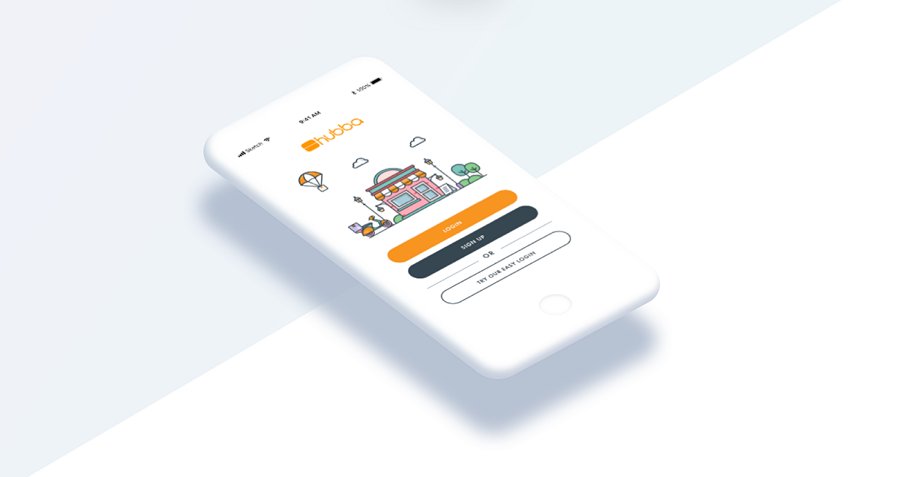
Hubba Mobile App is a B2B online marketplace where retailers can find and purchase unique products for their stores or shops. This case study aims to explain the process of creating a special mobile app for this online marketplace. It offers a beautiful and clear presentation of the entire UI/UX design process.
22. Music App - music for children
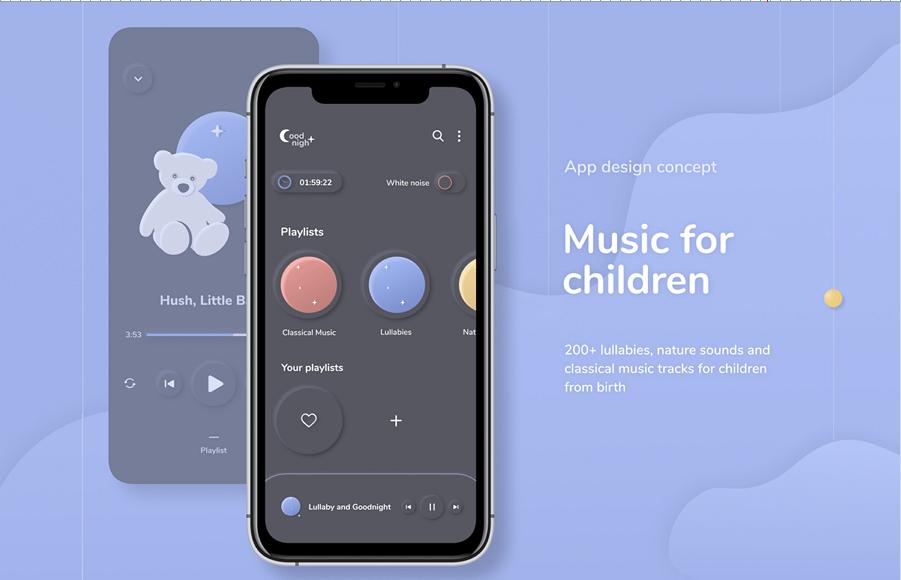
Music App shares the fancy UI and colors from a music app made for children. It is a good example that is sure to inspire you to create a distinctive children's app.
How do you create a UX case study?
If you are still not entirely sure how to go about creating a distinctive UX case study, here are a few simple steps to walk you through the entire process from start to finish:
Step 1. Figure out your purpose
The final outcome will depend on what it is you are trying to achieve. So, before you start writing a UX design case, you should first figure out in detail what its purpose is. Ask yourself some basic questions:
- Is it for a job interview?
- Is it for improving your personal portfolio?
- Is it designed to show off your design talents on social media?
- Is it just created to practice your design skills?
- Is it made to share design experiences with other designers?
In short, figuring out your purpose and setting a goal can make the entire design process so much easier.
Step 2. Plan or outline your case study
Whatever you want to do, it is always a good idea to start with a plan. When it comes to writing a UX case study, you should also outline your entire UX case study and decide on what sections you want to include.
For example, nowadays, a good UX design case study often covers:
- Overview : Start with a short paragraph that introduces your project.
- Challenges and goals : Explain the project background and point out the biggest challenges or problems you've encountered. Explain the goals you want to achieve and how you will overcome the challenges you have identified.
- Roles and responsibilities : Tell readers what role you play in the project and the specific features of your role that will help create a better product.
- Design process : Introduce the entire design process in detail so that readers can see clearly what you have done to make life easier for users. Many employers check this part very carefully to see whether you have the basic skills and abilities they are looking for. So, never underestimate the importance of this section.
- Solutions and outcomes : No matter what problems you have faced, the solutions and the final outcomes achieved are what really matters. So, always use this section to showcase your skills and achievements.
You might also want to add further sections:
- User research : Some full-stack designers also include this to give a more comprehensive view of their design skills.
- UI designs : Some experienced designers also display their relevant UIs, and UI flow, along with low- and high-fidelity prototypes to enrich the content.
Of course, if you are a newbie, and you still have questions, why not go online and search for UX case study templates that you can study and follow.
Step 3. Explain the design process clearly
As we've explained above, the design process is always one of the most important parts of a good UX case study. You should always introduce clearly as many of the relevant parts of the process as possible. For example: show how you and your team communicate and collaborate effectively; demonstrate how you have developed ideas to address user problems; explain how you and your team have dealt with emergencies or mishaps.
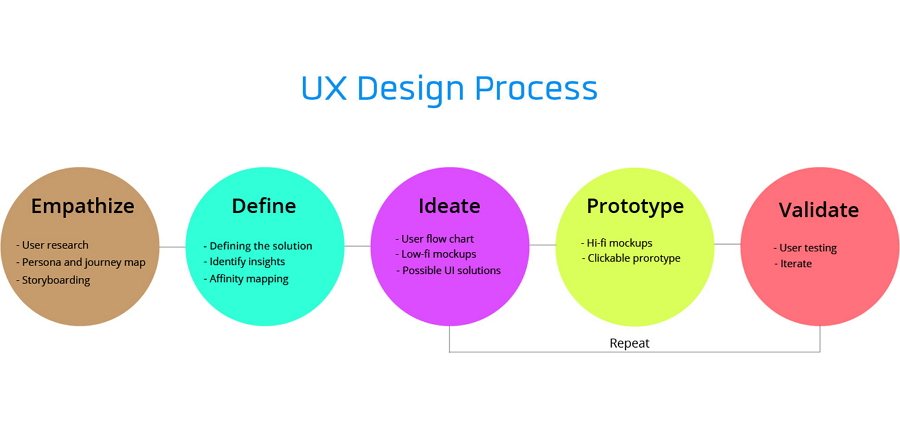
You can also introduce the UX design tools that you have chosen to simplify the entire design process. Mockplus, is an online product design platform, enabled us to adapt quickly and effectively to working from home during the recent Coronavirus lockdown. Prototyping our designs, sharing ideas, working together in an effective team, taking the process from design to handoff, it all works smoothly with this single tool.
Step 4. Improve readability and visual appeal
The content should be the main focus of your case study—but not the only focus. To make the case study as good as possible, you also need to think about its readability and visual appeal. Here are some suggestions to follow:
- Explain everything as clearly as possible.
- Add images, illustrations, charts, cards, icons, and other visuals.
- Create a clear storytelling structure or layout.
- Choose an immersive color scheme.
- Add eye-catching animations and interactions.
- Use vivid video, audio, and other multimedia resources.
The final visual effect can be make-or-break for whether your UX case study is going to stand out from the crowd. You should always take it seriously.
Step 5. Summarize
Every UX case study can be a good chance to practice and improve your design skills. So, in your conclusion, don’t forget to analyze the entire process and summarize the outcomes. Always take a minute to figure out what lessons you should take away from the process, what tips should be remembered, what should be improved, and—most important—what your next steps are going to be.
UX case studies are one of the most essential parts of a UX designer's portfolio. The ability to write a well-structured UX case study is also one of the basic skills that a competent UX professional should have. So, UX case studies play a very important role in UX designer's life.
We hope our picks of the best UX design case studies along with our step-by-step guide will help you create a stunning UX case study.
In- house content editor, specialize in SEO content writing. She is a fruit lover and visionary person.

Uploads design files from Sketch, Figma, Axure, Photoshop, and Adobe XD into our design handoff tool.

A free online prototyping tool that can create wireframes or highly interactive prototypes in just minutes.

A vector-based UI design tool enables you design in the way you want to.

Your single source of truth to build, maintain and evolve design assets in one place.

Related Content

Design Faster. Collaborate Better.
Designing the best user experience. Mockplus does it all!
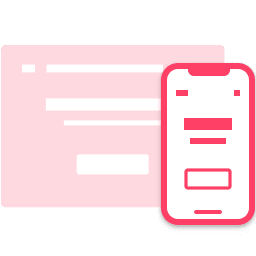
Interactive prototyping
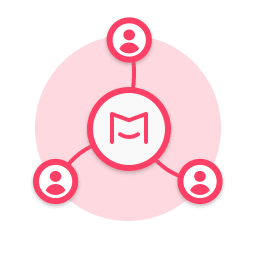
Unified collaboration
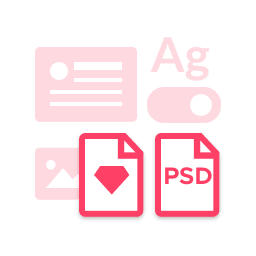
Scalable design systems
© 2014-2023 Mockplus Technology Co., Ltd. All rights reserved.
Interview slide decks

An Interview Slide deck containing an Introduction slide and UX design Case study presentation Template.
I hope this will help you in your next interview.


5 tips for presenting UX case studies

Senior UX/Product Designer, UiPath
Did you know? We have over 3,000 mentors available right now!
Getting ready for a design interview isn't always easy. Packaging months of work into a few slides or sentences can be challenging. However, there are a few things you can do to ease your workload.
When preparing to present a case study, it's important to think about the following:
1. Make sure your challenge is clear
A UX case study is the perfect tool to demonstrate how a design problem was solved. The challenge description can be used to set up the context of the case study. Write your challenge in a way that engages the readers and gets them interested right away. It should include necessary information, such as what you were trying to solve, who you were solving it for, and why you chose this particular solution.
Talk with your audience as if they were 5 years old. You are the expert; you know your project the best. Sometimes, you might get ghost guests within an interview which can review your work.
Your audience will go through a presentation of an entire design project, so the scope and the challenge need to be presented from the beginning and be clear. If it’s necessary and you want to make sure it’s easy to understand, try presenting it to some friends and iterate as you go.
2. Don’t present too many personas and flows
Case studies should be easy to follow — which means they shouldn't have too many personas and flows that are different from each other. It's important for the reader to be able to understand the process without being overwhelmed by too much information.
You can still mention that your product is used by different types of people, so various personas. but don't include everything and all variants for this presentation, because it will be difficult to follow.
Narrow your case study after you have presented the problem and opportunities. Make sure you present one persona and you focus on the main flow. Toward the end, select some key screens that are connected to the initial challenge.
3. Show us progress, drafts and discarded ideas
The design process for a case study is never linear. It takes time and effort to go through different drafts and discard ideas. However, this is what makes the final product so good. We'd like to know how your project evolved. Early ideas and drafts are more than welcome.
Most of the time, designers will go through many drafts before they finalize their idea for a project and that's perfectly fine. We're all going through the same process.
Show us how a research insight evolved into an idea, as well as how a sketch evolved into a high-fidelity mockup. Don't be afraid to share with the audience what items didn't go as expected and what ideas you’ve discarded along the design process.
4. Results, metrics, and learnings
Case studies are a very useful way to learn from other people's mistakes and successes. They provide a detailed overview of what works and what doesn't work in different scenarios so designers can avoid making similar mistakes while designing their own products. It is a good way to get inspiration for your own designs as well.
Having metrics can really make a difference in your presentation. Design metrics and results are some of the most important factors in evaluating the success of a design. Anyone should use these as a tool to measure their work and improve themselves.
I f you have the data, put it upfront. Tell us about the initial success rate, likes and dislikes, or why the challenge was a challenge. Compare the results with your initial state and give us some metrics.
And.. learnings? These are the best! And as we know, not all projects finish as planned. Tell us what could have been done better or what would you have done more if you had more time.
5. Remind them why they should hire you
Last but not least, add a slide in your case study where you present yourself. Your audience might change, so make sure your message gets across and everyone knows what makes you a good designer and different than the other candidates.
It isn't just about your skills, but also about how you present them. In order to stand out from the crowd, it is important to have a clear understanding of what you want and what you can do for the company. The best way to achieve this is by presenting yourself in the best possible way.
Take out the good stuff and don’t be shy!
Find an expert mentor
Get the career advice you need to succeed. Find a mentor who can help you with your career goals, on the leading mentorship marketplace.
We use essential cookies to make Venngage work. By clicking “Accept All Cookies”, you agree to the storing of cookies on your device to enhance site navigation, analyze site usage, and assist in our marketing efforts.
Manage Cookies
Cookies and similar technologies collect certain information about how you’re using our website. Some of them are essential, and without them you wouldn’t be able to use Venngage. But others are optional, and you get to choose whether we use them or not.
Strictly Necessary Cookies
These cookies are always on, as they’re essential for making Venngage work, and making it safe. Without these cookies, services you’ve asked for can’t be provided.
Show cookie providers
- Google Login
Functionality Cookies
These cookies help us provide enhanced functionality and personalisation, and remember your settings. They may be set by us or by third party providers.
Performance Cookies
These cookies help us analyze how many people are using Venngage, where they come from and how they're using it. If you opt out of these cookies, we can’t get feedback to make Venngage better for you and all our users.
- Google Analytics
Targeting Cookies
These cookies are set by our advertising partners to track your activity and show you relevant Venngage ads on other sites as you browse the internet.
- Google Tag Manager
- Infographics
- Daily Infographics
- Popular Templates
- Accessibility
- Graphic Design
- Graphs and Charts
- Data Visualization
- Human Resources
- Beginner Guides
Blog Business How to Present a Case Study like a Pro (With Examples)
How to Present a Case Study like a Pro (With Examples)
Written by: Danesh Ramuthi Sep 07, 2023

Okay, let’s get real: case studies can be kinda snooze-worthy. But guess what? They don’t have to be!
In this article, I will cover every element that transforms a mere report into a compelling case study, from selecting the right metrics to using persuasive narrative techniques.
And if you’re feeling a little lost, don’t worry! There are cool tools like Venngage’s Case Study Creator to help you whip up something awesome, even if you’re short on time. Plus, the pre-designed case study templates are like instant polish because let’s be honest, everyone loves a shortcut.
Click to jump ahead:
What is a case study presentation?
What is the purpose of presenting a case study, how to structure a case study presentation, how long should a case study presentation be, 5 case study presentation examples with templates, 6 tips for delivering an effective case study presentation, 5 common mistakes to avoid in a case study presentation, how to present a case study faqs.
A case study presentation involves a comprehensive examination of a specific subject, which could range from an individual, group, location, event, organization or phenomenon.
They’re like puzzles you get to solve with the audience, all while making you think outside the box.
Unlike a basic report or whitepaper, the purpose of a case study presentation is to stimulate critical thinking among the viewers.
The primary objective of a case study is to provide an extensive and profound comprehension of the chosen topic. You don’t just throw numbers at your audience. You use examples and real-life cases to make you think and see things from different angles.

The primary purpose of presenting a case study is to offer a comprehensive, evidence-based argument that informs, persuades and engages your audience.
Here’s the juicy part: presenting that case study can be your secret weapon. Whether you’re pitching a groundbreaking idea to a room full of suits or trying to impress your professor with your A-game, a well-crafted case study can be the magic dust that sprinkles brilliance over your words.
Think of it like digging into a puzzle you can’t quite crack . A case study lets you explore every piece, turn it over and see how it fits together. This close-up look helps you understand the whole picture, not just a blurry snapshot.
It’s also your chance to showcase how you analyze things, step by step, until you reach a conclusion. It’s all about being open and honest about how you got there.
Besides, presenting a case study gives you an opportunity to connect data and real-world scenarios in a compelling narrative. It helps to make your argument more relatable and accessible, increasing its impact on your audience.
One of the contexts where case studies can be very helpful is during the job interview. In some job interviews, you as candidates may be asked to present a case study as part of the selection process.
Having a case study presentation prepared allows the candidate to demonstrate their ability to understand complex issues, formulate strategies and communicate their ideas effectively.

The way you present a case study can make all the difference in how it’s received. A well-structured presentation not only holds the attention of your audience but also ensures that your key points are communicated clearly and effectively.
In this section, let’s go through the key steps that’ll help you structure your case study presentation for maximum impact.
Let’s get into it.
Open with an introductory overview
Start by introducing the subject of your case study and its relevance. Explain why this case study is important and who would benefit from the insights gained. This is your opportunity to grab your audience’s attention.

Explain the problem in question
Dive into the problem or challenge that the case study focuses on. Provide enough background information for the audience to understand the issue. If possible, quantify the problem using data or metrics to show the magnitude or severity.

Detail the solutions to solve the problem
After outlining the problem, describe the steps taken to find a solution. This could include the methodology, any experiments or tests performed and the options that were considered. Make sure to elaborate on why the final solution was chosen over the others.

Key stakeholders Involved
Talk about the individuals, groups or organizations that were directly impacted by or involved in the problem and its solution.
Stakeholders may experience a range of outcomes—some may benefit, while others could face setbacks.
For example, in a business transformation case study, employees could face job relocations or changes in work culture, while shareholders might be looking at potential gains or losses.
Discuss the key results & outcomes
Discuss the results of implementing the solution. Use data and metrics to back up your statements. Did the solution meet its objectives? What impact did it have on the stakeholders? Be honest about any setbacks or areas for improvement as well.

Include visuals to support your analysis
Visual aids can be incredibly effective in helping your audience grasp complex issues. Utilize charts, graphs, images or video clips to supplement your points. Make sure to explain each visual and how it contributes to your overall argument.
Pie charts illustrate the proportion of different components within a whole, useful for visualizing market share, budget allocation or user demographics.
This is particularly useful especially if you’re displaying survey results in your case study presentation.

Stacked charts on the other hand are perfect for visualizing composition and trends. This is great for analyzing things like customer demographics, product breakdowns or budget allocation in your case study.
Consider this example of a stacked bar chart template. It provides a straightforward summary of the top-selling cake flavors across various locations, offering a quick and comprehensive view of the data.

Not the chart you’re looking for? Browse Venngage’s gallery of chart templates to find the perfect one that’ll captivate your audience and level up your data storytelling.
Recommendations and next steps
Wrap up by providing recommendations based on the case study findings. Outline the next steps that stakeholders should take to either expand on the success of the project or address any remaining challenges.
Acknowledgments and references
Thank the people who contributed to the case study and helped in the problem-solving process. Cite any external resources, reports or data sets that contributed to your analysis.
Feedback & Q&A session
Open the floor for questions and feedback from your audience. This allows for further discussion and can provide additional insights that may not have been considered previously.
Closing remarks
Conclude the presentation by summarizing the key points and emphasizing the takeaways. Thank your audience for their time and participation and express your willingness to engage in further discussions or collaborations on the subject.

Well, the length of a case study presentation can vary depending on the complexity of the topic and the needs of your audience. However, a typical business or academic presentation often lasts between 15 to 30 minutes.
This time frame usually allows for a thorough explanation of the case while maintaining audience engagement. However, always consider leaving a few minutes at the end for a Q&A session to address any questions or clarify points made during the presentation.
When it comes to presenting a compelling case study, having a well-structured template can be a game-changer.
It helps you organize your thoughts, data and findings in a coherent and visually pleasing manner.
Not all case studies are created equal and different scenarios require distinct approaches for maximum impact.
To save you time and effort, I have curated a list of 5 versatile case study presentation templates, each designed for specific needs and audiences.
Here are some best case study presentation examples that showcase effective strategies for engaging your audience and conveying complex information clearly.
1 . Lab report case study template
Ever feel like your research gets lost in a world of endless numbers and jargon? Lab case studies are your way out!
Think of it as building a bridge between your cool experiment and everyone else. It’s more than just reporting results – it’s explaining the “why” and “how” in a way that grabs attention and makes sense.
This lap report template acts as a blueprint for your report, guiding you through each essential section (introduction, methods, results, etc.) in a logical order.

Want to present your research like a pro? Browse our research presentation template gallery for creative inspiration!
2. Product case study template
It’s time you ditch those boring slideshows and bullet points because I’ve got a better way to win over clients: product case study templates.
Instead of just listing features and benefits, you get to create a clear and concise story that shows potential clients exactly what your product can do for them. It’s like painting a picture they can easily visualize, helping them understand the value your product brings to the table.
Grab the template below, fill in the details, and watch as your product’s impact comes to life!

3. Content marketing case study template
In digital marketing, showcasing your accomplishments is as vital as achieving them.
A well-crafted case study not only acts as a testament to your successes but can also serve as an instructional tool for others.
With this coral content marketing case study template—a perfect blend of vibrant design and structured documentation, you can narrate your marketing triumphs effectively.

4. Case study psychology template
Understanding how people tick is one of psychology’s biggest quests and case studies are like magnifying glasses for the mind. They offer in-depth looks at real-life behaviors, emotions and thought processes, revealing fascinating insights into what makes us human.
Writing a top-notch case study, though, can be a challenge. It requires careful organization, clear presentation and meticulous attention to detail. That’s where a good case study psychology template comes in handy.
Think of it as a helpful guide, taking care of formatting and structure while you focus on the juicy content. No more wrestling with layouts or margins – just pour your research magic into crafting a compelling narrative.

5. Lead generation case study template
Lead generation can be a real head-scratcher. But here’s a little help: a lead generation case study.
Think of it like a friendly handshake and a confident resume all rolled into one. It’s your chance to showcase your expertise, share real-world successes and offer valuable insights. Potential clients get to see your track record, understand your approach and decide if you’re the right fit.
No need to start from scratch, though. This lead generation case study template guides you step-by-step through crafting a clear, compelling narrative that highlights your wins and offers actionable tips for others. Fill in the gaps with your specific data and strategies, and voilà! You’ve got a powerful tool to attract new customers.

Related: 15+ Professional Case Study Examples [Design Tips + Templates]
So, you’ve spent hours crafting the perfect case study and are now tasked with presenting it. Crafting the case study is only half the battle; delivering it effectively is equally important.
Whether you’re facing a room of executives, academics or potential clients, how you present your findings can make a significant difference in how your work is received.
Forget boring reports and snooze-inducing presentations! Let’s make your case study sing. Here are some key pointers to turn information into an engaging and persuasive performance:
- Know your audience : Tailor your presentation to the knowledge level and interests of your audience. Remember to use language and examples that resonate with them.
- Rehearse : Rehearsing your case study presentation is the key to a smooth delivery and for ensuring that you stay within the allotted time. Practice helps you fine-tune your pacing, hone your speaking skills with good word pronunciations and become comfortable with the material, leading to a more confident, conversational and effective presentation.
- Start strong : Open with a compelling introduction that grabs your audience’s attention. You might want to use an interesting statistic, a provocative question or a brief story that sets the stage for your case study.
- Be clear and concise : Avoid jargon and overly complex sentences. Get to the point quickly and stay focused on your objectives.
- Use visual aids : Incorporate slides with graphics, charts or videos to supplement your verbal presentation. Make sure they are easy to read and understand.
- Tell a story : Use storytelling techniques to make the case study more engaging. A well-told narrative can help you make complex data more relatable and easier to digest.

Ditching the dry reports and slide decks? Venngage’s case study templates let you wow customers with your solutions and gain insights to improve your business plan. Pre-built templates, visual magic and customer captivation – all just a click away. Go tell your story and watch them say “wow!”
Nailed your case study, but want to make your presentation even stronger? Avoid these common mistakes to ensure your audience gets the most out of it:
Overloading with information
A case study is not an encyclopedia. Overloading your presentation with excessive data, text or jargon can make it cumbersome and difficult for the audience to digest the key points. Stick to what’s essential and impactful. Need help making your data clear and impactful? Our data presentation templates can help! Find clear and engaging visuals to showcase your findings.
Lack of structure
Jumping haphazardly between points or topics can confuse your audience. A well-structured presentation, with a logical flow from introduction to conclusion, is crucial for effective communication.
Ignoring the audience
Different audiences have different needs and levels of understanding. Failing to adapt your presentation to your audience can result in a disconnect and a less impactful presentation.
Poor visual elements
While content is king, poor design or lack of visual elements can make your case study dull or hard to follow. Make sure you use high-quality images, graphs and other visual aids to support your narrative.
Not focusing on results
A case study aims to showcase a problem and its solution, but what most people care about are the results. Failing to highlight or adequately explain the outcomes can make your presentation fall flat.
How to start a case study presentation?
Starting a case study presentation effectively involves a few key steps:
- Grab attention : Open with a hook—an intriguing statistic, a provocative question or a compelling visual—to engage your audience from the get-go.
- Set the stage : Briefly introduce the subject, context and relevance of the case study to give your audience an idea of what to expect.
- Outline objectives : Clearly state what the case study aims to achieve. Are you solving a problem, proving a point or showcasing a success?
- Agenda : Give a quick outline of the key sections or topics you’ll cover to help the audience follow along.
- Set expectations : Let your audience know what you want them to take away from the presentation, whether it’s knowledge, inspiration or a call to action.
How to present a case study on PowerPoint and on Google Slides?
Presenting a case study on PowerPoint and Google Slides involves a structured approach for clarity and impact using presentation slides :
- Title slide : Start with a title slide that includes the name of the case study, your name and any relevant institutional affiliations.
- Introduction : Follow with a slide that outlines the problem or situation your case study addresses. Include a hook to engage the audience.
- Objectives : Clearly state the goals of the case study in a dedicated slide.
- Findings : Use charts, graphs and bullet points to present your findings succinctly.
- Analysis : Discuss what the findings mean, drawing on supporting data or secondary research as necessary.
- Conclusion : Summarize key takeaways and results.
- Q&A : End with a slide inviting questions from the audience.
What’s the role of analysis in a case study presentation?
The role of analysis in a case study presentation is to interpret the data and findings, providing context and meaning to them.
It helps your audience understand the implications of the case study, connects the dots between the problem and the solution and may offer recommendations for future action.
Is it important to include real data and results in the presentation?
Yes, including real data and results in a case study presentation is crucial to show experience, credibility and impact. Authentic data lends weight to your findings and conclusions, enabling the audience to trust your analysis and take your recommendations more seriously
How do I conclude a case study presentation effectively?
To conclude a case study presentation effectively, summarize the key findings, insights and recommendations in a clear and concise manner.
End with a strong call-to-action or a thought-provoking question to leave a lasting impression on your audience.
What’s the best way to showcase data in a case study presentation ?
The best way to showcase data in a case study presentation is through visual aids like charts, graphs and infographics which make complex information easily digestible, engaging and creative.
Don’t just report results, visualize them! This template for example lets you transform your social media case study into a captivating infographic that sparks conversation.

Choose the type of visual that best represents the data you’re showing; for example, use bar charts for comparisons or pie charts for parts of a whole.
Ensure that the visuals are high-quality and clearly labeled, so the audience can quickly grasp the key points.
Keep the design consistent and simple, avoiding clutter or overly complex visuals that could distract from the message.
Choose a template that perfectly suits your case study where you can utilize different visual aids for maximum impact.
Need more inspiration on how to turn numbers into impact with the help of infographics? Our ready-to-use infographic templates take the guesswork out of creating visual impact for your case studies with just a few clicks.
Related: 10+ Case Study Infographic Templates That Convert
Congrats on mastering the art of compelling case study presentations! This guide has equipped you with all the essentials, from structure and nuances to avoiding common pitfalls. You’re ready to impress any audience, whether in the boardroom, the classroom or beyond.
And remember, you’re not alone in this journey. Venngage’s Case Study Creator is your trusty companion, ready to elevate your presentations from ordinary to extraordinary. So, let your confidence shine, leverage your newly acquired skills and prepare to deliver presentations that truly resonate.
Go forth and make a lasting impact!
Discover popular designs

Infographic maker

Brochure maker

White paper online

Newsletter creator

Flyer maker

Timeline maker

Letterhead maker

Mind map maker

Ebook maker
- Top Courses
- Online Degrees
- Find your New Career
- Join for Free

Google UX Design Professional Certificate
Get on the fast track to a career in UX design. In this certificate program, you'll learn in-demand skills at your own pace, no degree or experience required.

Instructor: Google Career Certificates
Top Instructor
Financial aid available
999,006 already enrolled

(74,204 reviews)
Recommended experience
Beginner level
No degree or prior experience required
What you'll learn
Follow the design process: empathize with users, define pain points, ideate solutions, create wireframes and prototypes, test and iterate on designs
Understand the basics of UX research, like planning research studies, conducting interviews and usability studies, and synthesizing research results
Apply foundational UX concepts, like user-centered design, accessibility, and equity-focused design
Create a professional UX portfolio that includes 3 end-to-end projects: a mobile app, a responsive website, and a cross-platform experience
Skills you'll gain
- User Experience (UX)
- User Experience Design (UXD)
- UX Research
- Usability Testing
- UX design jobs
Details to know

Add to your LinkedIn profile
See how employees at top companies are mastering in-demand skills

Prepare for a career in UX Design
- Receive professional-level training from Google
- Demonstrate your proficiency in portfolio-ready projects
- Earn an employer-recognized certificate from Google
- Qualify for in-demand job titles: User Experience (UX) Designer, UI Designer, Interaction Designer

Get exclusive access to career resources upon completion
Improve your resume and LinkedIn with personalized feedback
Practice your skills with interactive tools and mock interviews
Plan your career move with Coursera’s job search guide
Connect with 150+ U.S. hiring organizations in Google’s Employer Consortium
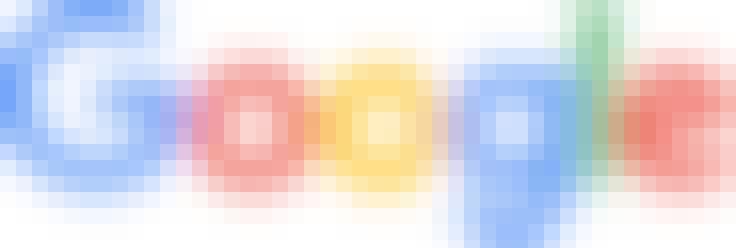
¹Lightcast™ US Job Postings (median U.S. salary with 0-5 years experience), Jan. 1, 2022 - Dec. 31, 2022). ²Positive career outcome (e.g., new job, promotion, or raise) within six months of completion. Based on program graduate survey, United States 2022.

Earn a career certificate
Add this credential to your LinkedIn profile, resume, or CV
Share it on social media and in your performance review

Professional Certificate - 7 course series
Prepare for a career in the high-growth field of UX design, no experience or degree required. With professional training designed by Google, get on the fast-track to a competitively paid job. There are over 138,000 open jobs in UX design with a median entry-level salary of $112,000.¹
User experience (UX) designers focus on the interaction that users have with products, like websites, apps, and physical objects. They make those everyday interactions useful, enjoyable, and accessible.
Over 7 courses, gain in-demand skills that will prepare you for an entry-level job.
You will create designs on paper and in digital design tools like Figma. By the end of the certificate program, you will have a professional UX portfolio that includes three end-to-end projects, so that you’re ready to apply for jobs. Upon completion, you can directly apply for jobs with Google and over 150 U.S. employers, including Deloitte, Target, Verizon, and of course, Google.
75% of certificate graduates report a positive career outcome (e.g., new job, promotion, or raise) within six months of completion²
¹Lightcast™ US Job Postings (2022: Jan. 1, 2022 - Dec. 31, 2022).
²Based on program graduate survey, United States 2022
Applied Learning Project
This program includes over 200 hours of instruction and hundreds of practice-based activities and assessments that simulate real-world UX design scenarios and are critical for success in the workplace. The content is highly interactive and developed by Google employees with decades of experience in UX design.
You’ll learn how to complete the design process from beginning to end, including: Empathizing with users; Defining user pain points; Coming up with ideas for design solutions; Creating wireframes, mockups, and prototypes; Testing designs through usability studies; Iterating on designs based on feedback.
Through a mix of videos, readings, assessments, and hands-on activities, you’ll learn in-demand design tools like Figma. You’ll even create a portfolio that includes three projects to share with potential employers to showcase the skills you learned in this program.
Learn concrete skills that top employers are hiring for right now.
Foundations of User Experience (UX) Design
Identify common job responsibilities of entry-level UX designers and other teams you might work with.
Understand foundational concepts in UX design, such as user-centered design, the design process, accessibility, and equity-focused design.
Explain why design sprints are an important and useful part of a UX designer’s work.
Start the UX Design Process: Empathize, Define, and Ideate
Empathize with users to understand their needs and pain points.
Develop problem statements to define user needs.
Generate ideas for possible solutions to user problems.
Build Wireframes and Low-Fidelity Prototypes
Create storyboards to come up with ideas about solutions to user needs.
Create wireframes on paper and digitally in the design tool Figma.
Build paper prototypes to create interactive designs.
Design low-fidelity prototypes in Figma.
Conduct UX Research and Test Early Concepts
Plan and conduct moderated and unmoderated usability studies.
Synthesize observations from usability studies and come up with insights.
Share research methodology and insights using persuasive presentation skills.
Modify low-fidelity designs based on research insights.
Create High-Fidelity Designs and Prototypes in Figma
Build mockups and high-fidelity prototypes in the design tool Figma.
Define and apply common visual design elements and principles.
Demonstrate how design systems can be used to organize, standardize, and enhance designs.
Understand the role of design critique sessions and feedback while iterating on designs.
Build Dynamic User Interfaces (UI) for Websites
Apply each step of the UX design thinking framework (empathize, define, ideate, prototype, test) to create a dynamic website.
Plan information architecture and sitemaps for website designs.
Apply common layouts for web pages.
Complete a design project and include it in your professional UX portfolio.
Design a User Experience for Social Good & Prepare for Jobs
Apply each step of the UX design thinking framework (empathize, define, ideate, prototype, test) to create a project focused on social good.
Build wireframes, mockups, and low-fidelity and high-fidelity prototypes for a dedicated mobile app and a responsive website.
Prepare to successfully interview for an entry-level UX design job.
Determine if freelance design work is a good career fit.

Grow with Google is an initiative that draws on Google's decades-long history of building products, platforms, and services that help people and businesses grow. We aim to help everyone – those who make up the workforce of today and the students who will drive the workforce of tomorrow – access the best of Google’s training and tools to grow their skills, careers, and businesses.
Get a head start on your degree
When you complete this Professional Certificate, you can earn college credit if you are admitted and enroll in one of the following online degree programs.¹
Illinois Tech
Bachelor of Information Technology
University of Massachusetts Global
Bachelor of Arts in Psychology
University of North Texas
Bachelor of Applied Arts and Sciences
Degree · 15+ hours of study/wk per course
¹Each university determines the number of pre-approved prior learning credits that may count towards the degree requirements according to institutional policies.

Degree credit eligible
This Professional Certificate has ACE® recommendation. It is eligible for college credit at participating U.S. colleges and universities. Note: The decision to accept specific credit recommendations is up to each institution. Learn more
Why people choose Coursera for their career
New to design and product start here..

Open new doors with Coursera Plus
Unlimited access to 7,000+ world-class courses, hands-on projects, and job-ready certificate programs - all included in your subscription
Advance your career with an online degree
Earn a degree from world-class universities - 100% online
Join over 3,400 global companies that choose Coursera for Business
Upskill your employees to excel in the digital economy
Frequently asked questions
What is a ux designer.
User experience (UX) designers focus on the experience that users have while using products like websites, apps, and physical objects. UX designers make those everyday interactions useful, enjoyable, and accessible. The role of an entry-level UX designer might include coming up with ideas to address user problems, conducting research with users, and designing wireframes, mockups, and prototypes.
If you enjoy talking to and empathizing with people, drawing, thinking creatively, or paying attention to details, a job as a UX designer might be a good fit for you!
Why start a career in UX design?
As the digital world continues to expand, companies recognize that designing good user experiences is a necessity, which is why UX design is a high-growth and in-demand job field. UX designers create and organize products that people interact with daily, like mobile apps, websites, smart watches, and even physical products.
What background knowledge is necessary?
None! Whether you’re completely new to the job field or have had some exposure, a Google Career Certificate is the right program for you.
Do I need to take the courses in a specific order?
We highly recommend taking the courses of each certificate program in the order presented, as the content builds on information from earlier courses.
Which tools or platforms are included in the curriculum?
Figma and Adobe XD are the design tools taught in this certificate program. Spreadsheets, word processing applications, and presentation applications will also be used. Throughout the program, you will create a professional portfolio, using the platform of your choice, to showcase your UX design work.
What will I be able to do upon completing the professional certificate?
Google Career Certificates are designed to prepare you for an entry-level role in job fields like data analytics, digital marketing & e-commerce, IT support, project management, and UX design. Upon completion of a Google Career Certificate, like this one, certificate graduates in the U.S. will have the option to share their information with top U.S. employers that are hiring entry-level professionals, like Lowe's, Adobe, Verizon and of course, Google. Employer consortiums are currently available in the U.S., Canada, India, Singapore, Indonesia and are coming to more countries soon. The employers included will vary by country.
Which jobs does this program prepare for?
One of the most exciting parts about joining the field of user experience is the large number of job opportunities available. Nearly every company needs UX designers to help create their digital and physical products. While the need for UX designers continues to grow, there is currently a shortage of UX design professionals to fill those roles.
A career in UX design allows you the opportunity to work as a generalist, finding a role as a UX designer, UI designer, or UX researcher, or as a specialist, like a visual designer or interaction designer. Upon completion of this certificate program, you will be able to search for jobs with all of these titles, and find the role that best suits you.
What resources will be available to help with the job search process?
In addition to expert-led training and hands-on projects designed to prepare you for a job, you'll get access to an interview practice tool Opens in a new tab , mock interviews and resume building workshops, career coaching sessions and more. You'll also be able to connect with over 150 U.S. employers who are searching for candidates who have completed a Google Career Certificate.
What kind of companies hire UX design professionals?
Organizations of all kinds, in industries as varied as technology, finance, and advertising, need UX designers to develop products.
Why did Google create this program?
Google had long faced an issue that many other companies also contend with: We had open IT support roles, but not enough qualified candidates to fill them. So we built and tested a training program to provide pathways to jobs in technical support at Google for people with no college degree or experience. In 2018, Google launched the IT Support Certificate so that this training could be available to everyone. Since then, thousands of people have completed the program. In the United States, 75% of certificate graduates report a positive career outcome (e.g., new job, promotion, or raise) within six months of completion.¹
When we saw the positive impact this program was having on people all over the world, we expanded into additional fast-growing, high-paying career fields: cybersecurity, data analytics, digital marketing & e-commerce, project management and UX design. Built and taught by Google, these certificates prepare people from all backgrounds for jobs in fields with great demand for qualified candidates. No degree or previous experience is required. Graduates get the chance to connect directly with over 150 U.S. employers who are accepting Google Career Certificates for open jobs.
¹Based on program graduate survey, United States, 2022.
Is this program offered in other languages?
This certificate is currently available globally in English. You can also find Google Career Certificates available globally in the following languages: Turkish, German, Spanish, Arabic, Russian, and Indonesian Bahasa. We are working on adding more languages soon. Please continue to check back here for updates.
How much does this certificate cost?
In the U.S. and Canada, Coursera charges $49 per month after the initial 7-day free trial period. The Google UX Design Certificate can be completed in less than 6 months at under 10 hours per week of part-time study, so most learners can complete the certificate for less than $300 USD. In other countries where Google Career Certificates are available, your cost may be lower.
Can I get college credit for taking the Google UX Design Certificate?
Those planning to attend a degree program can utilize ACE®️ recommendations Opens in a new tab or ECTS recommendations Opens in a new tab , the industry standard for translating workplace learning to college credit. Learners can earn an ACE recommendation of up to 10 college credits Opens in a new tab , or 9 ECTS credits, for completing the UX Design Certificate. This aims to help open up additional pathways to learners who are interested in higher education, and prepare them for entry-level jobs.
To share proof of completion with schools, certificate graduates will receive an email prompting them to claim their Credly Opens in a new tab badge, which contains the ACE ® ️ or ECTS credit recommendation. Once claimed, they will receive a competency-based transcript that signifies the credit recommendation, which can be shared directly with a school from the Credly platform. Please note that the decision to accept specific credit recommendations is up to each institution and is not guaranteed.
Is this course really 100% online? Do I need to attend any classes in person?
This course is completely online, so there’s no need to show up to a classroom in person. You can access your lectures, readings and assignments anytime and anywhere via the web or your mobile device.
What is the refund policy?
If you subscribed, you get a 7-day free trial during which you can cancel at no penalty. After that, we don’t give refunds, but you can cancel your subscription at any time. See our full refund policy Opens in a new tab .
Can I just enroll in a single course?
Yes! To get started, click the course card that interests you and enroll. You can enroll and complete the course to earn a shareable certificate, or you can audit it to view the course materials for free. When you subscribe to a course that is part of a Certificate, you’re automatically subscribed to the full Certificate. Visit your learner dashboard to track your progress.
More questions

IMAGES
VIDEO
COMMENTS
3. UX Portfolio Critique: Get a 20-minute video of brutally honest feedback, a checklist of things to fix, in less than 48 hours. Get a personalised portfolio critique here. 4. Job Sprint Course: Stand out in an unpredictable job market by building a memorable personal brand and a killer job search strategy.
Timestamps:00:00 - How NOT to present your UX Case Studies00:29 - Download the free UX presentation template00:59 - Presenting a real UX design case study08:...
The length of your case study presentation depends on the structure of the interview. In almost all cases, that's up to the hiring company. It is common for an interview to take between 30 and 60 minutes. However, your UX case study presentation can be shorter than that.
2. Senior Designer Bundle: Become a design leader with systems to help you build a meaningful career & grow your designers. Join 500+ aspiring leaders. 3. UX Portfolio Critique: Get a 20-minute ...
However, when she came to me for interview prep, she was very stressed. She wanted to know if we could use one of her past "industrial design" case studies in the interview. She told me many other UX designers told her using an industrial case study for a UX interview is not allowed, which I told her was not exactly true. Take a look below.
A UX research report is a summary of the methods used, research conducted, data collected, and insights gleaned from user research. Traditional research reports (like the ones still produced by scientific and academic researchers) are typically long text documents with detailed explanations of participant sampling, methodologies, analyses, etc.
Write an outline for each project case study; Prepare your UX portfolio presentation slides; Practice with a timer (and with an audience) Anticipate possible questions from the hiring panel; 1. Choose the projects you want to showcase. The purpose of your UX portfolio presentation is to show the hiring team what you're capable of.
Step 3: Tell a Story. Engage Your Audience: Begin with an introduction about yourself and your design journey. Make it relatable and engaging. For instance, you could start by sharing a personal ...
6. Conclusion and Q&A. As you conclude your presentation, express gratitude for the opportunity to present your portfolio. Open the floor for questions and engage in a discussion with the audience, and be prepared to answer questions related to your design choices, thought process, and outcomes.
Hi designers! This week I'm back with a video on how to present your UX or Product Design portfolio in an interview.In the video, I share guidance and tips a...
Explore 10 steps to build a solid UX/UI case study and land your dream design job. ... Refine the design and visual presentation: Ensure your case study is visually appealing and consistent. ... Share snippets of interviews or research deliverables to add visual interest to your process. However, don't overdo it—no one wants to read four ...
Choose two projects that match most closely with the job profile. Typically, you can get through two projects within a 90-minute case study interview. Always choose case studies that show off different skills—for instance, one generative or strategic study and one evaluative study. If you are starting out and only have one case study, that is ...
Use This Guide to Delight Recruiters, and create a killer presentation. A Case study presentation happens when the company wants to learn: If you know how to apply UX tools, when they are needed and when they aren't. This guide is a junction of my knowledge on public speaking, storytelling, interviews, presentation knowledge, things learned at ...
In general, you're usually given about 45 minutes to an hour to talk about your work. I advice candidates to leave 10-15 minutes of time for questions from the interview panel. The following ...
Gemma Helyer. Open in Figma. Elevate your User Experience (UX) case study presentations with our comprehensive and visually engaging UX Case Study Presentation Kit. This meticulously crafted template is designed to streamline your storytelling, highlight design thinking, and showcase the impact of your UX solutions effectively.
Sagar Vasnani. made with. UXfolio. 3. Talk about the team setup, your role, and activity in a project. Talk about your role and place in the team. Many candidates forget that for most positions they must be effective team workers. There is no better way to prove that than talking about your role as part of a whole.
The best way to write a case study is to tell it like a story. This way, your case studies become a vessel through which recruiters can imagine a future working with you, since they get to experience and understand exactly how you solve a design problem. Your recruiters will also enjoy the familiarity and structure of a story arc, and they'll ...
2. GnO Well Being - Branding, Web Desing & UX. Designer: Marina Yalanska and Olga Zakharyan. Case Study: GnO Well Being. This is a creative illustration website that presents and sells a weighted designer blanket that helps you get a good night's sleep, the first step to good health and a better life.
Springboard UX/UI Bootcamp- Code: SHARONKIM to get $1000 USD off your tuition! Link here: https://shorturl.at/aceptUX Portfolio Finishing School with me! 202...
Adding elements of your personality here might be a good way to lighten up the presentation. 2. Be prepared to go over 2-3 case studies. Portfolio presentations usually last an hour; this allows you to go over 2-3 projects in-depth. For each case study, be sure to note the following before you dive deep into your design processes: Your role
When you crafted your resume, you should have included a range of achievements that you were happy to discuss as talking points in the interview. These questions often follow standard formats such as: "What design methods did you use to achieve…". "Did you face any challenges during…". "Share an experience where…".
When preparing for an interview, the way you present your User Experience (UX) research process and methodologies can make a significant impact. As a UX researcher, you have a unique set of skills ...
For Figma. Last updated 3 months ago. Support: [email protected]. Licensed under CC BY 4.0. An Interview Slide deck containing an Introduction slide and UX design Case study presentation Template. I hope this will help you in your next interview.
Getting ready for a design interview isn't always easy. Packaging months of work into a few slides or sentences can be challenging. ... When preparing to present a case study, it's important to think about the following: 1. Make sure your challenge is clear. A UX case study is the perfect tool to demonstrate how a design problem was solved. The ...
To save you time and effort, I have curated a list of 5 versatile case study presentation templates, each designed for specific needs and audiences. Here are some best case study presentation examples that showcase effective strategies for engaging your audience and conveying complex information clearly. 1. Lab report case study template.
The Google UX Design Certificate can be completed in less than 6 months at under 10 hours per week of part-time study, so most learners can complete the certificate for less than $300 USD. In other countries where Google Career Certificates are available, your cost may be lower.
Interview Insight and UT Result Reflection. This project is challenging for me because of its need for more resources. I must search for the content myself, but then the committee says that the challenge is only to outline the official web so the content can be left with lorem ipsum. ... UI/UX Case Study: The Starbucks App Revamp You've All ...